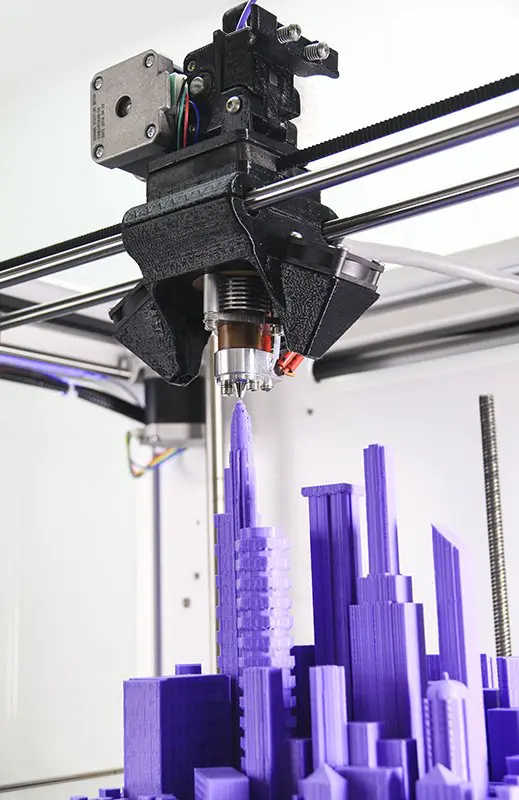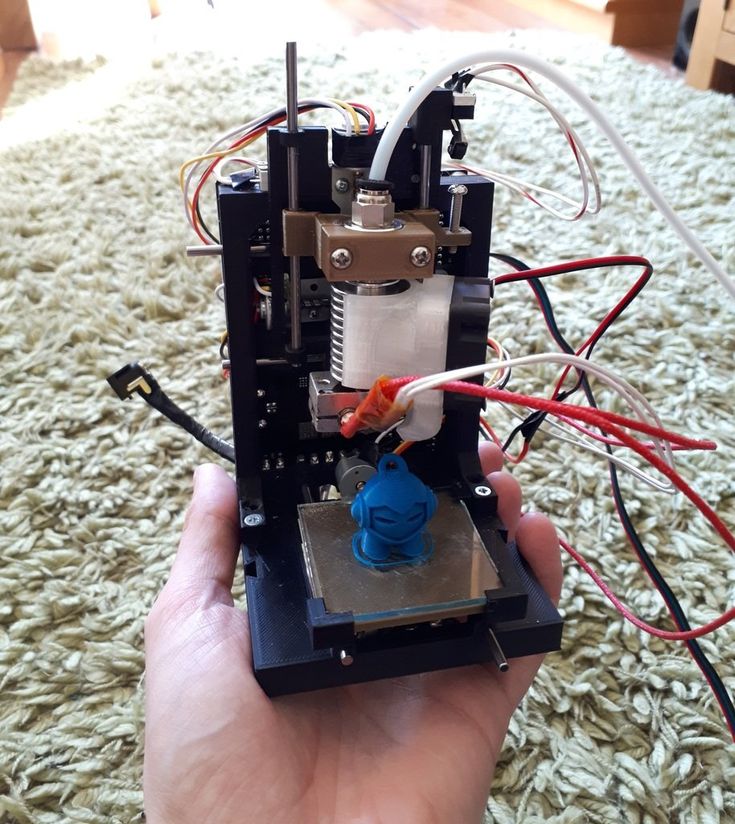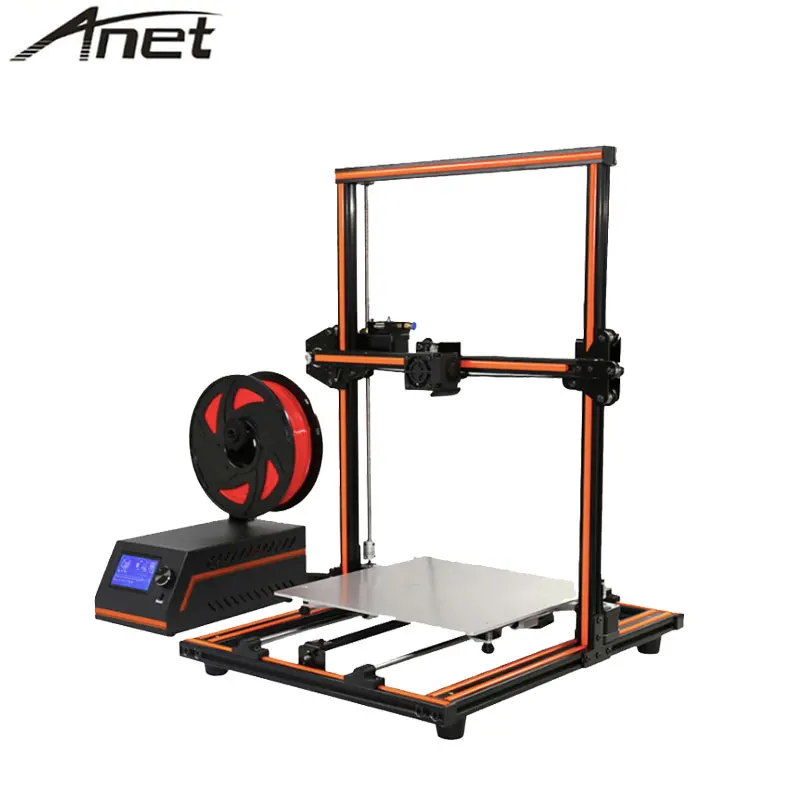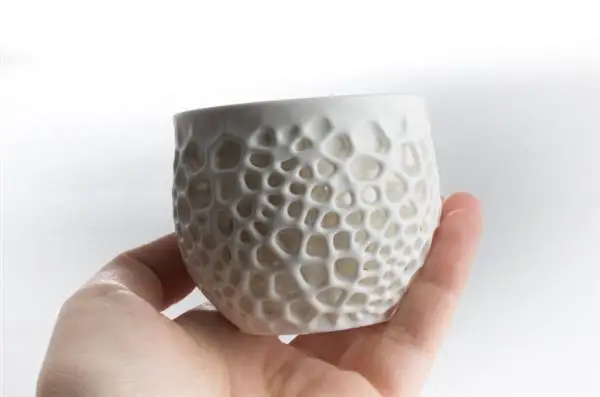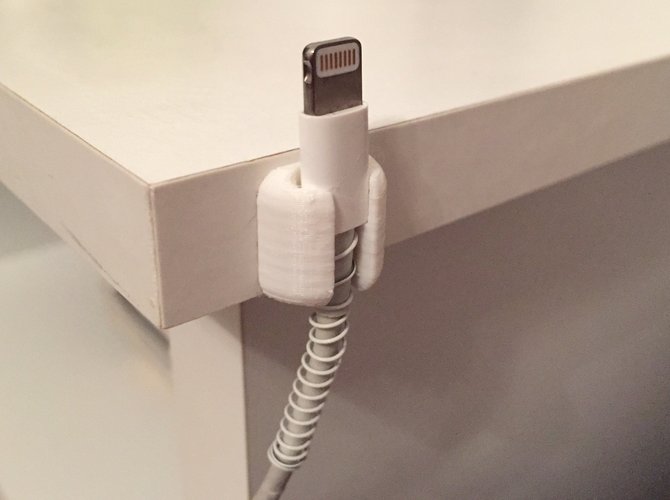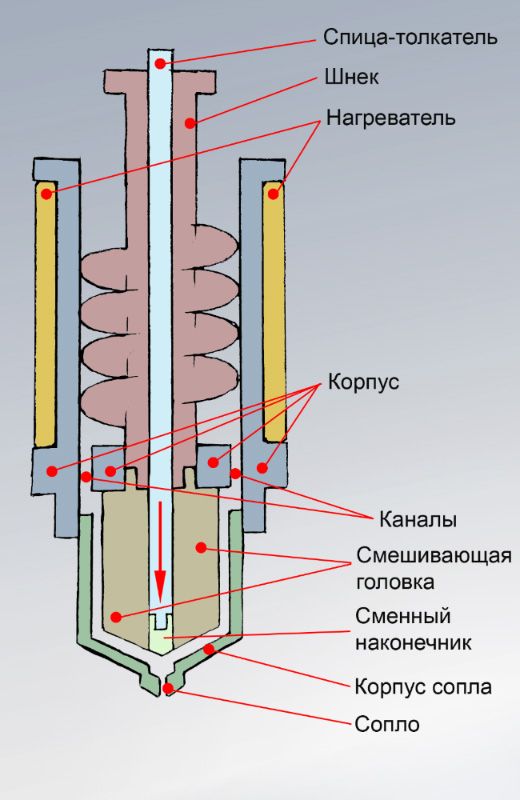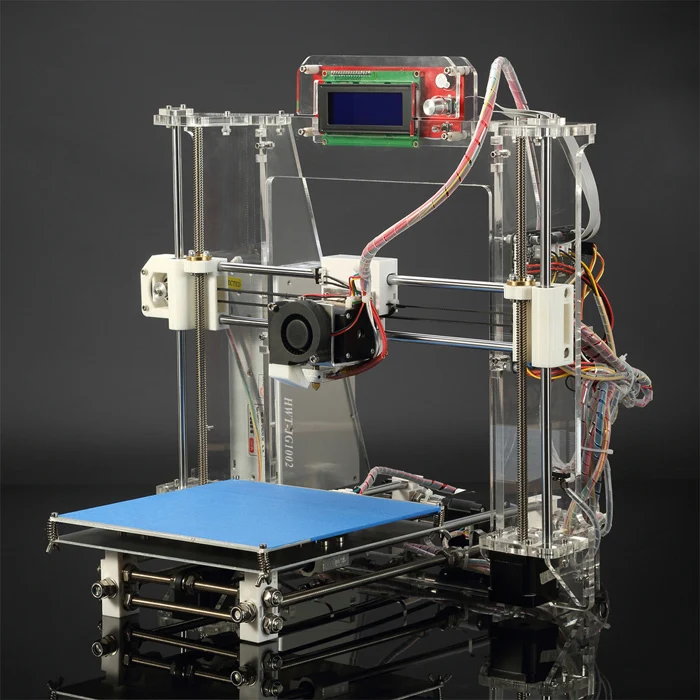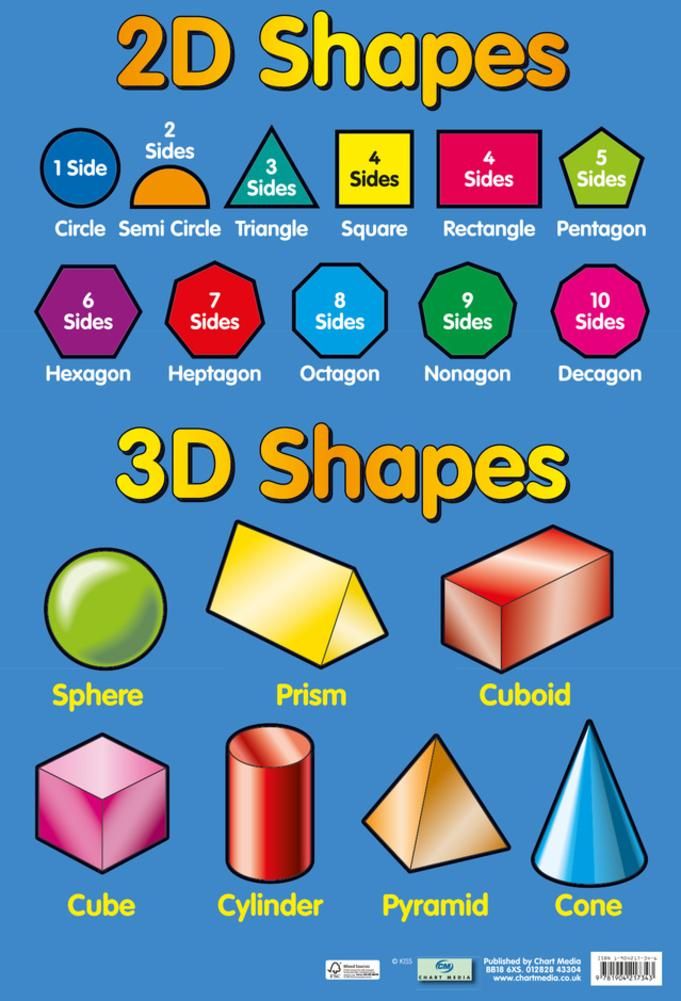Best large resin 3d printer
Best Large Resin 3D Printers in 2022 (Every Price Range)
For some, size matters – and a normal-sized resin 3D printer just won’t cut it. For you size kings and queens, bigger is better, and you shouldn’t have to compromise on your quest for the biggest resin 3D printer around.
And with resin printing becoming more affordable than ever before, buying a large resin 3D printer vs outsourcing larger resin prints to a service has never been more cost-effective.
Why Buy a Large Resin 3D Printer?
First, by keeping prototyping in-house you retain full control, you can prototype as fast as your printer will print, and you still don’t have to compromise on size.
BUDGET PICK
Elegoo Saturn
One of the best low-cost large resin 3D printers
Great accuracy and speed with 2-3s per layer exposures, ideal for batch printing of miniatures or single larger prototypes
Reliable and durable printer
Available at:
MID-RANGE PICK
Anycubic Photon M3 Max
The largest resin 3D printer for under $1000
For a lower-cost home business, you won’t find anything that can print more small models in an hour for cheaper
Amazing 6480x3600px 13. 6” 7K LCD for resin curing power
Available at:
Anycubic hereAmazon herePREMIUM PICK
Phrozen Sonic Mega 8K
70mm/h speed for even faster curing than Anycubic and Elegoo printers
Maintains excellent 43-micron resolution even at large build volumes
Ideal for high-quality prototyping, and for selling D&D and other custom 3D models
Available at:
Phrozen hereResin printers typically have smaller build volumes than their FDM counterparts, focusing instead on outrageous quality and incredibly smooth surface finishes.
However, this creates problems when you want to prototype larger parts, such as helmets or tools and equipment. With a large volume resin 3D printer, you’re free to print human-sized resin parts that can be tested right away.
And even if you’re a hobbyist looking to print large cosplay pieces or other parts, some large format resin 3D printers have become so affordable that you can even get in on the action at home.
We have therefore picked our recommendations for the best build volume format resin 3D printers, in both more affordable and commercial and industrial price ranges and specs, so you can pick the ideal printer for you.
TOP PICKS
The Best Large Resin 3D Printers – Full Round-Up
Desktop Large Resin Printers
- Elegoo Saturn — cheapest large resin printer
- Anycubic Photon M3 Max — Best for $1,000
- Phrozen Sonic Mega 8K — best premium desktop large volume resin printer
Professional Large Resin Printers
- Peopoly Phenom L
- Peopoly Phenom Prime
- Formlabs Form 3L
The Best Large Resin 3D Printer Reviews
3DSourced is reader-supported. When you buy through links on our site, we may earn an affiliate commission. Learn more
Affordable Large Resin Printers
1.
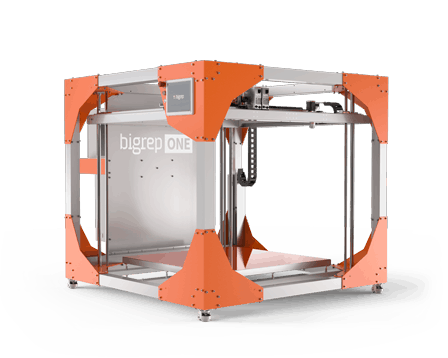 Elegoo Saturn
Elegoo Saturn- Price: Check latest price at Elegoo store here / Available at Amazon here
- Large resin 3D printer build volume: 192 x 120 x 200 mm
Pros
One of the best low-cost large resin 3D printers
Great accuracy and speed with 2-3s per layer exposures, ideal for batch printing of miniatures or single larger prototypes
Reliable and durable printer
Cons
Newer Saturn 2 and Saturn S may suit you better (but they’re more expensive)
The Elegoo Saturn packs a powerful punch with its 8.9-inch 4K monochrome LCD, offering fast 2-3 secs/layer printing — a 60% improvement on Elegoo’s cheaper Mars Pro — and with upgraded stellar quality.
The build volume is far larger than most entry-level large bed resin 3D printers at 192 x 120 x 200 mm, and while this isn’t large enough for printing tools prototypes like spades, for example, you can still print most normal-sized resin parts here.
And for smaller resin prints like casts for jewelry, small prototypes, or fun home projects, you can fit many within each print run.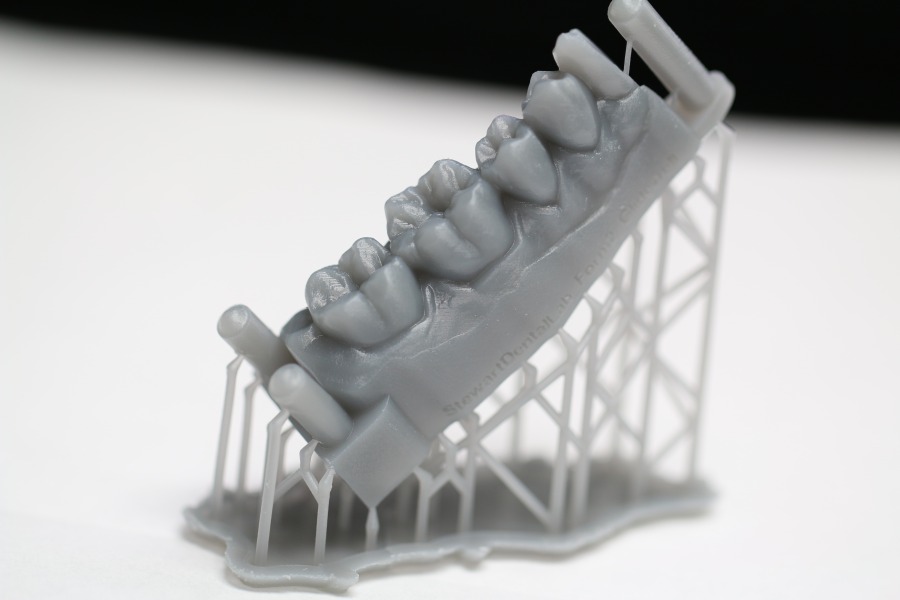 Elegoo Saturn printing a graboid from the movie Tremors. Credit: Dr. Barkau and Mr. Chris
Elegoo Saturn printing a graboid from the movie Tremors. Credit: Dr. Barkau and Mr. Chris
The upgraded Z-axis moves more precisely and accurately – and you’ll see the differences as it churns out delightful resin prints. The printer contains 54 LEDs to accurately print large objects and solidify resin more uniformly than ever before.
It’s also built to need less frequent leveling – saving you hassle – and the Elegoo Saturn is known for great adhesion when printing.
2. Anycubic Photon M3 Max
- Price: Check latest price at Anycubic here / Amazon here
- Build Volume: 298 x 164 x 300 mm
- XY Resolution: 46 microns
- Minimum Layer Thickness: 0.01 mm
- Speed: 60 mm/h
Pros
The largest resin 3D printer for under $1000
For a lower-cost home business, you won’t find anything that can print more small models in an hour for cheaper
Amazing 6480x3600px 13.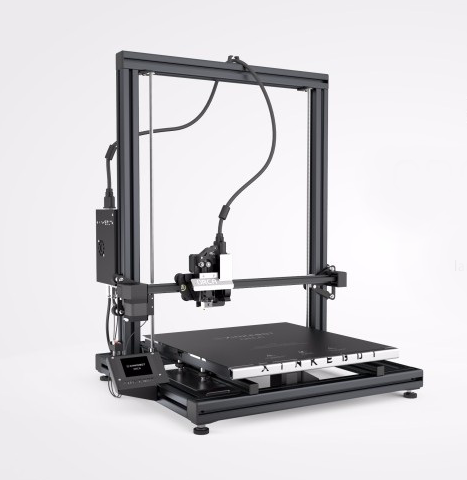 6” 7K LCD for resin curing power
6” 7K LCD for resin curing power
Cons
The smaller Photon M3 models offer slightly better XY resolution
The latest in Anycubic’s long line of budget-friendly resin 3D printers, the Photon M3 Max is the manufacturer’s first venture into super-sized build volume territory.
Encompassing 298 x 164 x 300 mm, it has plenty for all those bigger resin projects you’ve put off due to size constraints.
A 13.6″ 7K LCD delivers a dizzying 6480 x 3600 pixels, which, when put to the test, offer a 46 micron XY resolution, which considering the build volume, is extraordinarily accurate (resolution declines with size). That is sufficient detail to bring out armor and weapon details on tiny figures and minis, or to craft intricate and patterned jewelry.
It’s also super fast, at 60mm/hr print speed – which across the large print bed means you can dozens of minis in one job.
Elsewhere, Anycubic has weaved some welcome ease-of-use features. An automatic smart resin filling system sees a resin bottle mounted on the machine.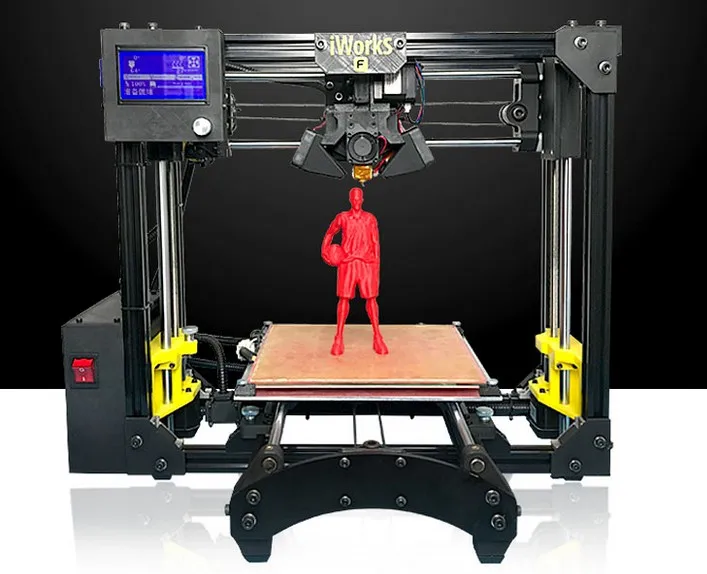 It automatically tops up the vat as required, almost guaranteeing uninterrupted printing for even the largest prints.
It automatically tops up the vat as required, almost guaranteeing uninterrupted printing for even the largest prints.
Elsewhere, there’s a replaceable screen protector and solid adhesion courtesy of a checkerboard build plate.
3D Printed Moon Knight character. Source: RedditSo, why opt for the Anycubic Photon M3 Max over the Phrozen Sonic Mega 8K?
For one thing, price. The Mega 8K costs more than twice as much, due to Anycubic’s sensible cost cutting (mainly plastic-heavy construction) to sell the M3 Max at a reasonable price.
Where the extra money goes is clear: the Mega 8K is faster, offers better print detail, and provides a large build volume.
But, for makers needing an XL printer at a reasonable price and one capable of delivering feature-rich and detailed prints, the Anycubic Photon M3 Max is a great compromise and the top budget large SLA printer pick.
That said, if you have the extra funds, then the Phrozen Sonic Mega 8K is a substantially better machine.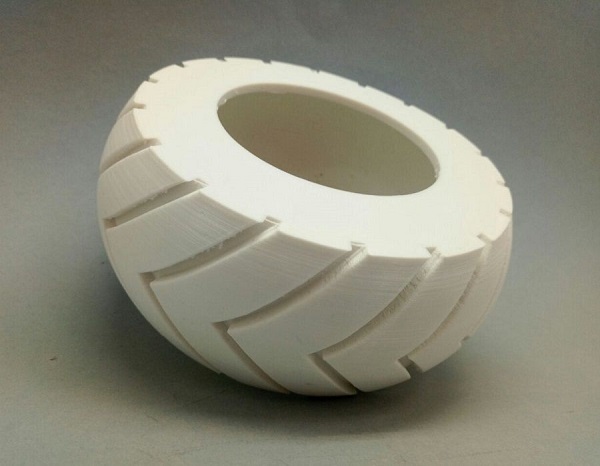 It has a much more versatile set of features that are better suited to serious prototyping, batch printing Dungeons & Dragons, or other tabletop miniatures to fuel a small business or workshop.
It has a much more versatile set of features that are better suited to serious prototyping, batch printing Dungeons & Dragons, or other tabletop miniatures to fuel a small business or workshop.
3. Phrozen Sonic Mega 8K
- Price: $2199 — Available at Phrozen here
- Build Volume: 330 x 185 x 400 mm
- XY Resolution: 43 microns
- Minimum Layer Height: 0.01 mm
- Speed: 70 mm/h
Pros
70mm/h speed for even faster curing than Anycubic and Elegoo printers
Maintains excellent 43-micron resolution even at large build volumes
Ideal for high-quality prototyping, and for selling D&D and other custom 3D models
Cons
Significantly more expensive than Anycubic and Elegoo printers — so may be too much for hobbyists and newer small business sellers
The Phrozen Sonic Mega 8K is not just one of the largest resin printers on the market, but is also widely regarded as one of the best, thanks to a careful balance of relative affordability, features, and the pristine detail offered by its 8K resolution LCD.
The star of the show is, of course, the 330 x 185 x 400 mm build volume, the most generously sized you’ll find among consumer-grade printers this side of Pluto. While we could stop there, the Phrozen Sonic Mega 8K has plenty more strings to its resiny bow.
The 15″ 8K LCD delivers superb print quality while avoiding the unusual downgrade in detail and feature richness associated with increased build volume. 8K means pixels for days – 7680 x 4320, if we’re being exact.
All these desirable features allow the Phrozen Sonic Mega 8K to reach an XY resolution of 43 microns, which is astounding for such a giant machine. Few other large resin 3D printers come close to delivering this level of detail in large-scale models and parts.
Phrozen Sonic Mega 8K and a full sized 3d printed “Happy” mask. Credit: Josh HardieAs Phrozen puts it:
‘You can now have both size and quality in one print, at the same time.’
Elsewhere, there are a few other notable mentions. The Phrozen Sonic Mega 8K ships pre-leveled, so no messing around with the tough task of calibrating a huge build plate before you can start printing.
The Phrozen Sonic Mega 8K ships pre-leveled, so no messing around with the tough task of calibrating a huge build plate before you can start printing.
Curing away at 70 mm/h, the Phrozen Sonic Mega 8K makes quick work of prints, too, which should help with large prints that already take a long time to complete – or business jobs.
It also features a dual linear rail and ball screw design for extra stability even in the upper reaches of the massive build volume. And lastly, the full metal exterior adds strength and durability but also mixes in a welcome touch of flair.
Priced at $2,200, the Phrozen Sonic Mega 8K requires a substantial investment, which makes it a good pick for serious amateur makers with deep pockets, and small businesses looking for a reliable workhorse with plenty of printing capacity.
- A cheaper alternative: Phrozen Mighty 4K for $599
Professional Large Resin 3D Printers
4. Peopoly Phenom L
- Price: $2,499 — Available at Matterhackers here
- Print volume: 345 x 197 x 400 mm
Pros
Large enough for even most large resin prototypes
Significantly improved on original Phenom: faster exposure times, double print speed, and 21-micron improved accuracy (from 72 to 51 microns)
Cons
More complex and industrial than a standard desktop resin printer
You can even then choose to upgrade and go further and buy the Phenom L, an even larger resin 3D printer for an extra $500.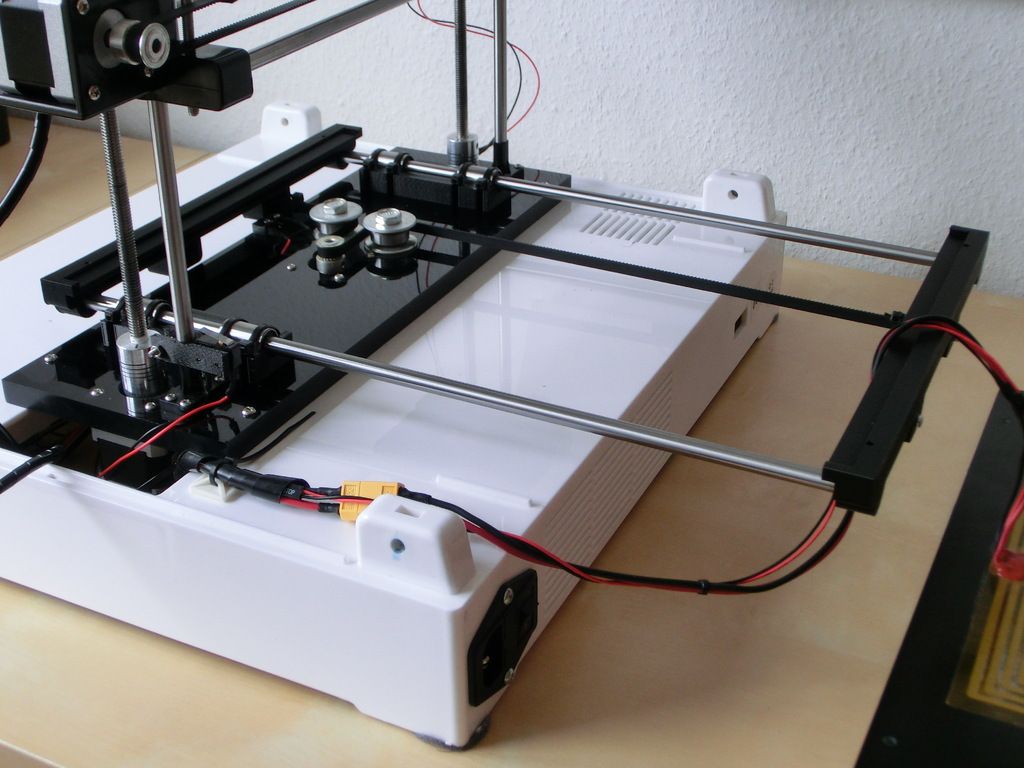 Resolution falls to 90um, but print volume explodes to 345 x 194 x 400 mm — it’s gigantic!Iron Man mask printed on the Phenom L. Source: Reddit
Resolution falls to 90um, but print volume explodes to 345 x 194 x 400 mm — it’s gigantic!Iron Man mask printed on the Phenom L. Source: Reddit
You can easily print prototype helmets, tools, and other larger resin prototypes in this large-format resin build area.
4.5 Peopoly Phenom Prime
- Price: $1899 — Available at Matterhackers here
- Build Volume: 276 x 155 x 400 mm
- XY Resolution: 51 microns
- Minimum Layer Height: 0.01 mm
- Speed: 60 mm/h
Since 2017, Peopoly has wowed 3D printer enthusiasts by delivering some of the roomiest, large-scale 3D printers, chiefly embodied by the Phenom range. Half a decade later, Peopoly has booted much of the original line-up to the technological graveyard to make room for its most sophisticated Phenom yet, the Peopoly Phenom Prime.
Both a spiritual successor and a logical evolution for the range, the Phenom Prime retains all of what we liked about the original but levels up the offering with modern features and niceties to make it faster and more precise.
It features a massive 276 x 155 x 400 mm build volume – same as on the Phenom – so no major changes there. Where things get interesting is the inclusion of a 5.5K (read 5448 x 3064 pixels) LCD that bumps up the XY resolution to a sharp 51 microns, a massive leap over the original’s 72 microns.
Phenom Prime printing the pelvic bone. Source: Liqcreate 3D-printingUnlike the original Phenom’s RGB LCD, the Prime features a monochrome screen. Par for the course in modern printers, but a welcome change that increases panel lifespan by up to three times.
The monochrome panel also boasts a higher light transmission rate or permeability, which results in much faster curing and a 70% reduction in exposure time. In other words, much speedier printing – a 100% increase according to Peopoly.
Elsewhere, the Phenom Prime has an improved cooling system to handle the heat produced by such a large machine. It’s also quieter, something that anyone who dabbled with the original will relish, given its reputation for blaring the decibels in full swing.
Who would benefit most from the Phenom Prime?
First and foremost, anyone that owns a Phenom and will make the most of the Prime’s sleek new upgrades.
Second, for us, the Phenom Prime slots in as an excellent option for a small workshop that needs more capacity and printing pep than the more budget-oriented printers like Anycubic Photon M3 Max.
5. Formlabs Form 3L
- Price: $10,999 — Available at Dynamism here
- Build volume: 335 x 200 x 300 mm
Designed specifically for large-scale resin part production, the Formlabs 3L build on Formlabs is already stellar reputation and brings it to the big leagues.
It uses the same Formlabs low force stereolithography SLA technology as on the Form 3, with two precision LPUs (Light Processing Units) for higher resolution prints and consistency throughout, and Formlabs stress that this indeed is the ideal solution to save your business money by no longer outsourcing your prototyping and fabrication.
Numerous case studies show helmets printed in exquisite detail, shovel prototypes (though even with the printer’s large build area, it required three parts), nozzles, and even high-resolution full-size Teenage Mutant Ninja Turtle models — if you’re a design studio or uber-wealthy superfan.
Clear kettle prototype printed on the Form 3L. Source: TwitterIt’s easier to use than most commercial large resin 3D printers, and seeks to minimize hassle and the steep learning curve across the board — such as by offering automatic resin dispensing, simplifying the entire slicing and software workflow, and with the delightfully intuitive 5.5-inch full-color touchscreen.
If you’re running a 3D printer farm you can manage them all via the cloud, and you can also make use of Formlabs’ wide resin selection: standard, engineering, flexible, tough and durable, dental or medical, and even jewelry castable resin — you can make almost anything for any industry use with the Form 3L.
For home use, it’s probably overkill, but it’s possibly the best large SLA printer, offering fantastic build volume and high-precision printing.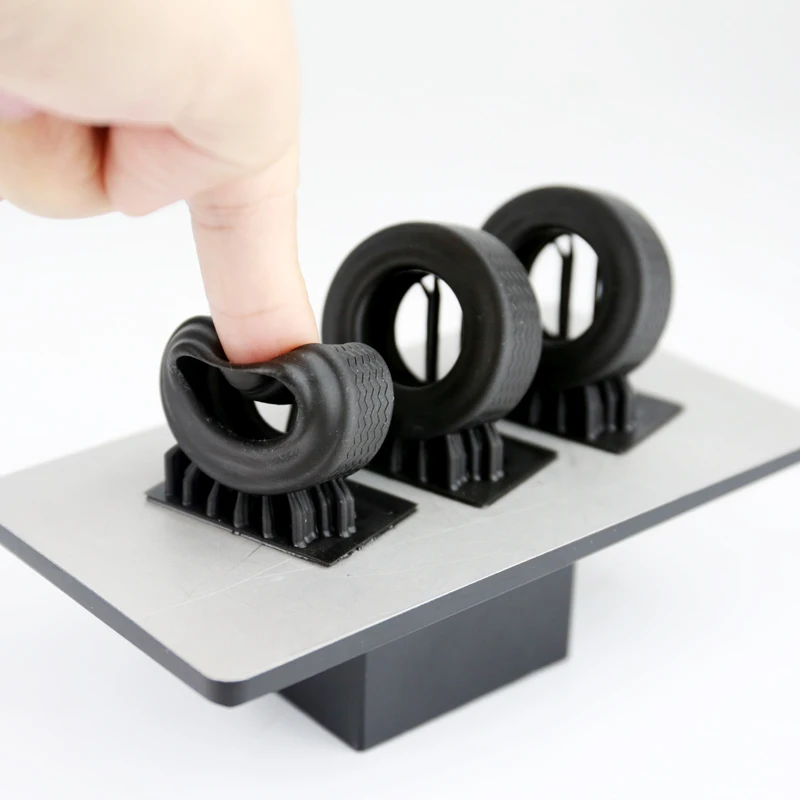
6. Photocentric Liquid Crystal Magna
- Price: $15,000+
- Print volume: 510 x 280 x 350 mm
British company Photocentric make some of the highest resolution LCD technology printers around for industry, with the LC Magna designed for precise dental and product design prototyping at large scales and sizes.
It’s super-fast, a giant resin printer, and accurate, with Photocentric’s own resins helping keep costs lower over the long term.
Photocentric also manufactures a wash module for washing prints and a curing module for curing prints that require this, and the LC Magna has been used to prototype and manufacture glasses, dental models, models figurines, and even motorbike engines.
Finished prints on the Liquid Crystal Magna. Source: PhotocentricThe 4K 137-micron display delivers accuracy over the entire print bed, using the benefits of anti-aliasing, and uses Photocentric’s patented blow-peel technologies to prevent some of the negative effects of large resin build areas coming into play, and retain the intricate details on large models and small objects at high speed.
Overall, it’s costly but offers key benefits as a big resin 3D printer in large-scale industry and prototyping.
Buyer’s Guide – Things to Consider When Buying a Large Resin 3D Printer
Build Volume
Build volume is obviously the main consideration when picking a large-format resin printer to buy. What size you need depends entirely on your plans and needs.
For most amateur makers looking to print cosplay props, highly detailed figures in batches, and larger decorative pieces, a build volume around 300 x 150 x 300 mm should be sufficient. For you, either Elegoo Saturn range, or the Anycubic Photon M3 Plus or Max are more than enough.
If you’re unsure exactly what you’ll want to print in the future, it’s worth opting for something a little larger than your needs.
Your ambitions and project may change over time, so it’s better to have some leeway to work with.
LCD and Pixel Count
Avoid RGB LCDs at all costs. The technology is now outdated: it’s slower and has a shorter lifespan. Instead, choose a large resin 3D printer with a monochrome LCD – a must-have in our book.
Instead, choose a large resin 3D printer with a monochrome LCD – a must-have in our book.
It’s worth noting that the larger the LCD (and, by extension, build volume), the more pixels have to stretch and expand to cover the entire plate effectively. The fewer pixels, the less detail a printer can produce.
This means that LCDs with a higher resolution are a must-have for larger printers. We’d recommend at least 4K, but don’t hesitate to pivot to printers pushing 5K and even 7K/8K LCDs if your budget allows it.
The Elegoo Saturn has a 4K LCD, the Photon M3 Max has 7K, and the Sonic Mega 8K has, you guessed it, an 8K screen.
XY Resolution
XY resolution determines the level of accuracy a printer can produce, the amount of detail, the quality of the surface finish, and how well it will render features.
Larger build volumes used to mean a downgrade to XY resolution, but nowadays, it’s possible to buy large format printers with excellent resolution.
Anything around 50 microns should serve the large majority of makers, but if you want that extra bit of detail, opt for printers with a lower XY resolution.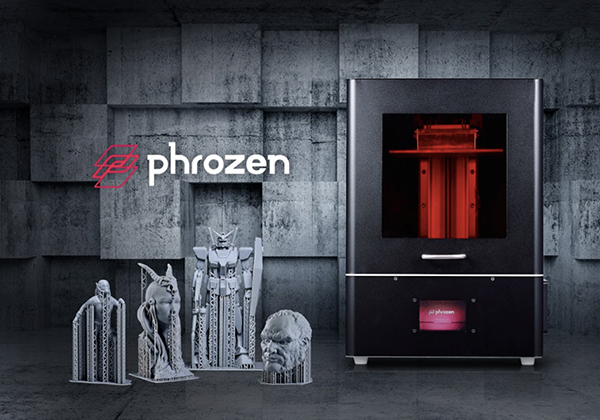
Build Quality and Stability
Managing movement in large format resin printers is vital if you want uniform fine details and precision throughout your prints. Look to printers with solid metal frames to improve durability, dual linear rails, and sturdy covers/shrouds/hinged doors.
These tend to peter out as the price drops, but so does the build volume, which somewhat cuts down on their utility. In other words, don’t be put off by budget large format resin 3D printers that don’t have all the fancy features of the pricier XL alternatives.
Print Speed
Remember that MSLA printers cure entire layers at once, unlike FDM. So, speed – in terms of how many models you can create per hour or day – is directly impacted by the size of the build volume. This is where the size of a resin printer is so important.
Though it’s easy to be drawn in by the pull of blisteringly fast print speeds, it doesn’t mean you’ll actually always be printing at these speeds.
These high speeds are pushed as marketing ploys – often, you won’t come close to these numbers, especially if you want high-detail prints.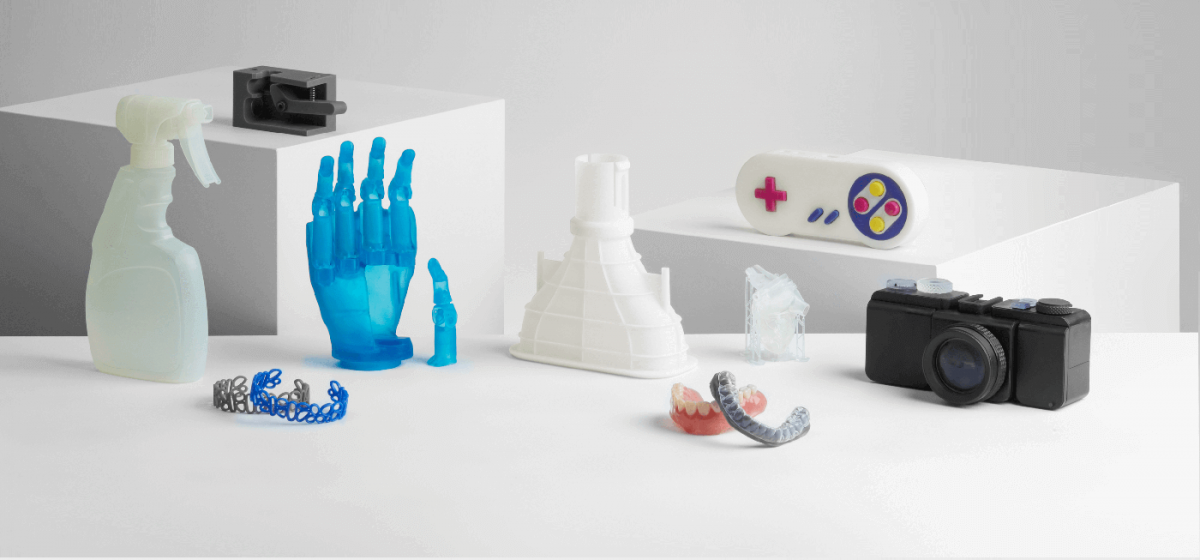
But, if you plan to use a resin printer as a daily go-to machine for batch printing, more speed certainly makes a tangible difference to print times. 60 mm/h is becoming somewhat of a standard for most large resin 3D printers and represents a good starting point for most makers.
Some speeds among the printers we recommend:
- Anycubic Photon M3 Max: 60mm/h
- Phrozen Sonic Mega 8K: 70mm/h
- Peopoly Phenom Prime: 60mm/h
Price
For a modestly-sized but still comparatively large resin printer, expect to pay around $500 to $700. We recommend the Elegoo Saturn printers here, but the Anycubic Photon M3 Plus is also great.
For mid-range machines with plenty of capacity, expect to pay $1000 or slightly more. The Anycubic Photon M3 Max is bigger than the M3 Plus, and is ideal for this price range and use.
From here, prices surge to thousands of dollars for large resin 3D printers with the biggest build volumes and features. These tend to be reserved for business and professional workshops with the budget to spare.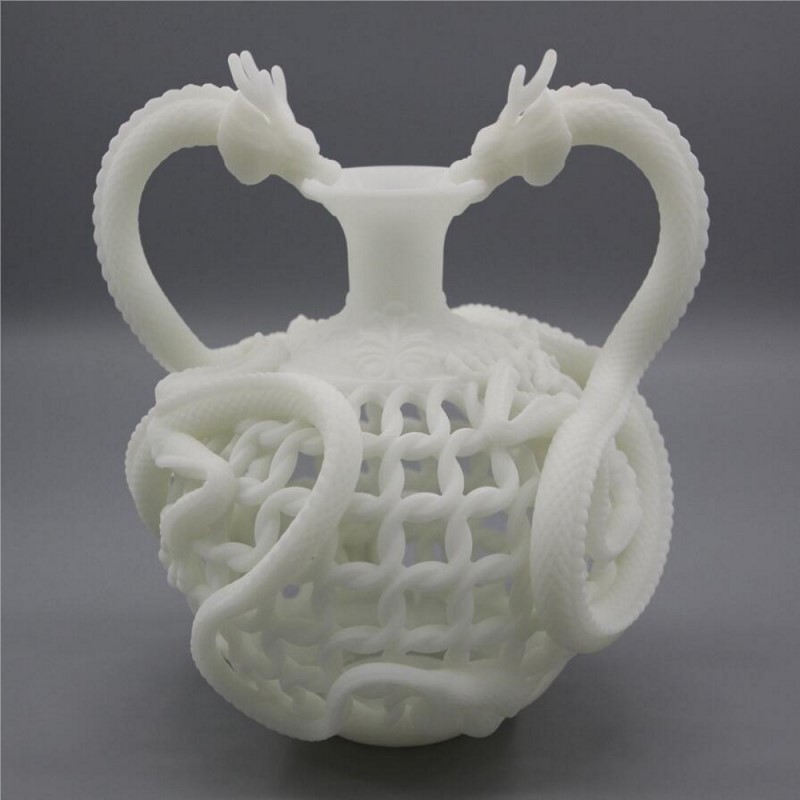
Read more: Photon M3 vs M3 Plus vs M3 Max – all the differences
Large Resin 3D Printer FAQs
What Resin Printer Has the Biggest Build Plate?
The consumer-grade resin 3D printer with the biggest plate is currently the Phrozen Sonic Mega 8K. Phrozen’s flagship large format SLA printer features a 15″ 8K LCD, 330 x 185 mm build plate for a total build volume of 330 x 185 x 400 mm.
Jumping up in price, we have Peopoly Phenom XX, which has a 23.8″ 4K LCD and 527 × 296 x 550 mm build volume. It’s priced at $7,500, positioning it firmly in the professional portion of the resin 3D printer market as one of the largest SLA printers available.
How Big Can a Resin Printer Print?
A resin 3D printer can print as big as its build volume allows. For instance, the Anycubic Photon M3 Max has a 300 x 164 x 298 mm build volume, meaning you could print a solid cube of that size on the printer.
What Is the Biggest Anycubic Resin Printer?
The biggest resin printer from Anycubic is the Photon M3 Max, the largest of the manufacturer’s recently launched M3 series printers.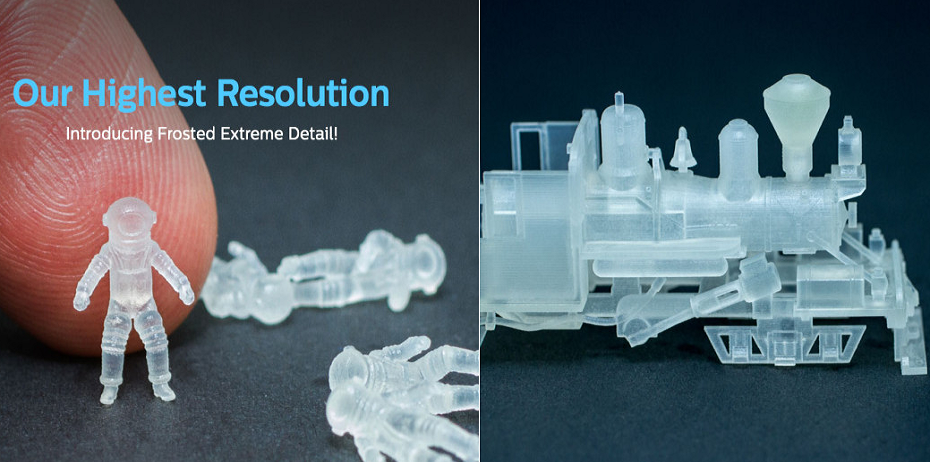 It has a build volume of 300 x 164 x 298 mm, which positions it as a large format resin 3D printer.
It has a build volume of 300 x 164 x 298 mm, which positions it as a large format resin 3D printer.
What is the largest 3D resin printer?
The Photocentric Crystal Magna is one of the largest resin 3D printers in the world, but it’s too expensive for average makers at home. The largest desktop resin 3D printers are the Anycubic Photon M3 Max, Elegoo Jupiter, and Phrozen Sonic Mega 8K.
What is the biggest Elegoo 3D printer?
The biggest resin printer from Elegoo is the Elegoo Jupiter 12.8” 6K 3D printer. It has a build volume of 278 x 156 x 300 mm, and a 12.8-inch 6K monochrome LCD to print even the largest models at 70mm/h.
Further reading:
- The best resin 3D printers
- Is 3D printing miniatures cheaper? (FDM and resin)
- Best 3D printers for miniatures
- DIY SLA 3D printers you can build yourself
- The best large 3D printer (FDM and other technologies)
- Best 3D printers for small businesses
- Top professional 3D printers
- 500x500x500mm 3D printers
- Best wash and cure stations
6 Best Large Resin 3D Printers In 2022
- Last Updated: December 16, 2022
- Jackson O'Connell
Resin, or SLA, 3D printers excel in yielding super detailed models, which is why they’re so popular for printing miniatures. However, these types of 3D printers are usually a bit lacking in print space.
However, these types of 3D printers are usually a bit lacking in print space.
While many FDM 3D printers have a build area more extensive than 250 x 250 mm, finding a resin machine with a print space greater than 150 x 150 mm is difficult. This limits you to only printing small or mid-size models (e.g. miniatures) on resin 3D printers, with larger models, like cosplay armor, being out of reach.
In an effort to expand what models I can 3D print in resin, I’ve scoured the world for the largest resin 3D printers. In the sections below, I’ve reviewed them based on user data online and my personal experiences with the machines.
Enjoy!
Elegoo Saturn
Build volume: 192 x 120 x 200 mm
Get Discount Now
Check Latest Price
Anycubic Photon Mono X
Build volume: 192 x 120 x 245 mm
Get Discount Now
Check Latest Price
Formlabs Form 3L
Build volume: 335 x 200 x 300 mm
Check Latest Price
Table of Contents
- Best Large Resin 3D Printers At A Glance
- 1.
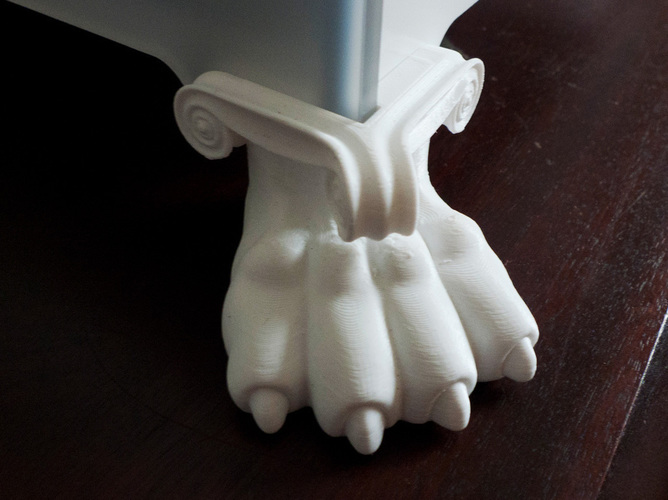 Elegoo Saturn 4K (Best Value)
Elegoo Saturn 4K (Best Value) - 2. Anycubic Photon Mono X (Best Choice)
- 3. Formlabs Form 3L (Premium Choice)
- 4. Phrozen Sonic Mega 8K (Large Print Volume)
- 5. Peopoly Phenom Prime (Most Accurate MSLA)
- 6. Phrozen Sonic Mighty 4K (Quality Prints)
- 1.
- Why Buy a Large Resin 3D Printer?
- What is the Difference Between FDM and Resin Printing?
- Is PLA Stronger than Resin?
- Do You Need to Cure Resin Prints?
- Why is Ventilation Important for Resin Printing?
- Conclusion
Best Large Resin 3D Printers At A Glance
1. Elegoo Saturn (Best Value)
2. Anycubic Photon Mono X (Best Choice)
3. Formlabs Form 3L (Premium Choice)
4. Phrozen Sonic Mega 8K (Large Print Volume)
5. Peoploly Phenom Prime (Most Accurate MSLA)
6. Phrozen Sonic Mighty 4K (Quality Prints)
3D Printer Type: MSLA | Material: Resin | Build Volume: 192 x 120 x 200 mm
First up: the Elegoo Saturn 4K. The Saturn was made by the popular 3D printer manufacturer, Elegoo, and has a decent maximum print volume of 192 x 120 x 200 mm. It’s obviously not the largest resin 3D printer on the market, but I still think it’s worthy of discussion because it’s such a good bang for your buck.
The Saturn was made by the popular 3D printer manufacturer, Elegoo, and has a decent maximum print volume of 192 x 120 x 200 mm. It’s obviously not the largest resin 3D printer on the market, but I still think it’s worthy of discussion because it’s such a good bang for your buck.
Moreover, for under $400, you get a resin printer with a 4K monochrome LCD screen. This means the prints that come out of the Saturn are super detailed, with 4K resolution and a dimensional accuracy of just 0.05 mm. You won’t even be able to see any mistakes or layer lines on the prints!
And though the quality of prints was clearly a focus for Elegoo when making the Saturn, they didn’t sacrifice the speed. At 2-3 seconds per layer, the Saturn is reasonably fast compared to other printers on the market. However, it is worth noting that the time your prints take to finish will also depend on the layer height you choose in the slicer program.
Another feature of the Saturn that I love is the easy-to-use touchscreen user interface. A simple and ergonomic UI layout is something often overlooked by 3D printer manufacturers, but not Elegoo!
A simple and ergonomic UI layout is something often overlooked by 3D printer manufacturers, but not Elegoo!
So, if you’re looking for a printer that brings you the most value for your dollar, look no further than the Elegoo Saturn. Of course, you can find larger print volumes on other printers, but it’s hard to find a mid-size resin printer that has as many features at such an affordable price.
Note: Elegoo is releasing a newer, slightly larger version of the Saturn soon- the Saturn 2. Learn more here.
- Very good dimensional accuracy for prints
- Pretty fast
- Decently-large build volume
- Easy-to-use touchscreen user interface
- A good bang for your buck
- Not the largest print volume
- Not super reliable
- Not super sturdy
Get Discount (Official Store)
Check Latest Price
2. Anycubic Photon Mono X (Best Choice)
Anycubic Photon Mono X (Best Choice) 3D Printer Type: LCD-Based SLA | Material: Resin | Build Volume: 192 x 120 x 245 mm
Anycubic is one of the leading manufacturers of consumer-grade resin printers, and their Photon series carries many amazing printers. Similar to the Elegoo Saturn, the Photon Mono X offers a decent build volume of 192 x 120 x 245 mm.
Of course, the area (X/Y axes) is still pretty mid-size, but the 245 mm on the Z-axis is definitely impressive and will allow for taller prints (e.g. Eiffel Tower).
That said, the Mono X has a lot more to offer than just a good print volume, such as its insanely fast speeds. I’m not kidding when I say “insanely fast”; the Mono X can reach speeds as fast as 1.5-2 seconds per layer. That’s 3 times faster than most other printers on the market, so printing larger models won’t take so long.
You’ll also be happy to know that controlling the Mono X is a breeze. On top of the basic touchscreen interface on the bottom of the printer, you can use Anycubic’s control app to adjust settings, monitor the print status, and so much more.
On top of the basic touchscreen interface on the bottom of the printer, you can use Anycubic’s control app to adjust settings, monitor the print status, and so much more.
The quality on this machine is also something worth noting, as Anycubic has fitted one of their “Matrix” monochrome 4K screens on the Mono X. This yields astounding detail on prints, and I’m always surprised when I can’t find any layer lines on models, even when I use a magnifying glass.
Overall, I think the Anycubic Photon Mono X is the best choice for a relatively large resin printer. It’s big enough for most mid-size and almost-large 3D prints, but the high-quality 4K screen, ultra-fast print speeds, and control features make it all worth the money!
- 4K screen for impressive print quality and detail
- Easy-to-use interface
- Fast print speeds
- Not too large of a build volume
Get Discount (Official Store)
Check Latest Price
3. Formlabs Form 3L (Premium Choice)
Formlabs Form 3L (Premium Choice) 3D Printer Type: LFS | Material: Formlabs Resin | Build Volume: 335 x 200 x 300 mm
When it comes to premium-quality resin printing, Formlabs runs the show… they practically invented it. The Formlabs Form 3L is the extra large version of the Formlabs 3, which is the third version of the original Formlabs SLA printer that brought the company fame.
And Formlabs never disappoints. The 3L is packed with advanced features that yield exceptional resin models with impressive reliability. The most important feature, of course, is the 335 x 200 x 300 mm maximum build volume, which allows for even the most imaginative prints to be turned into real life.
With this much build space and at a very high price point, the Formlabs 3L is probably most catered towards professional businesses, like design firms, who need to print large architectural models with a high level of detail.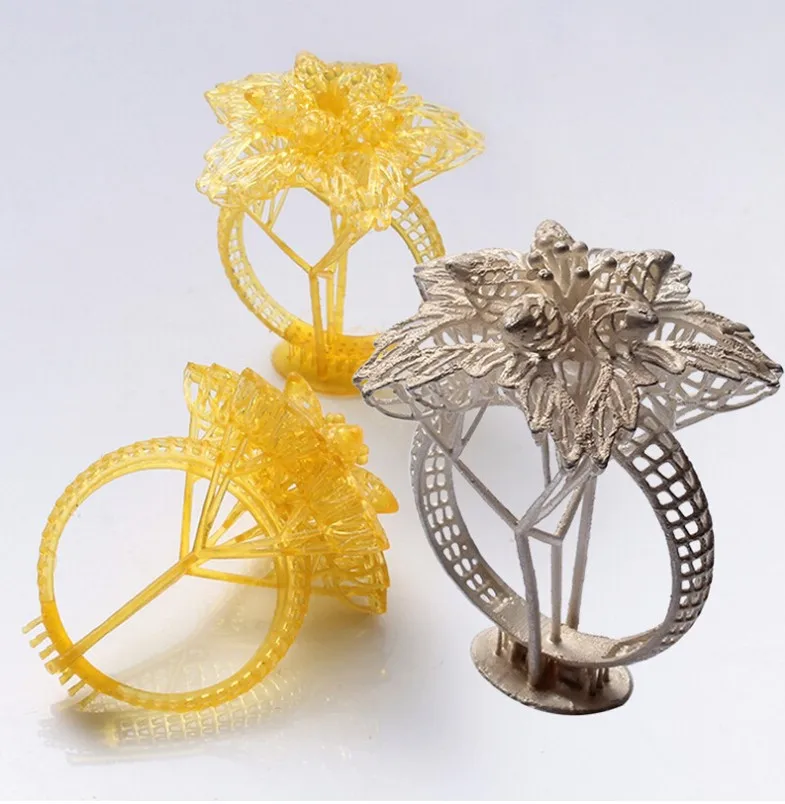 However, the Formlabs 3L might still be a worthy investment for personal use if you want large, high-detail prints, like many cosplay models.
However, the Formlabs 3L might still be a worthy investment for personal use if you want large, high-detail prints, like many cosplay models.
On this note about detail on prints, the Formlabs 3L can achieve an X/Y resolution of 25 microns and the same accuracy for the Z-layer resolution. For reference, 1 millimeter, which is already hard to see, is 1000 microns, so an accuracy of 25 microns is absolutely bonkers.
Sadly, as a Formlabs printer, the 3L is only compatible with Formlabs-branded resin, which is a lot more pricey than your typical resin. However, this resin is also optimized to yield the most detail on the printer, so it’s kind of worth it. Formlabs also offers you a few resin versions of the resin, including a high-detail version, speed version, and some other options.
As for the reliability of the Formlabs 3L, it’s insane how long this printer can go without failing in even the slightest way. The many sensors onboard the 3L also make the print intelligent enough to alert you when certain issues occur.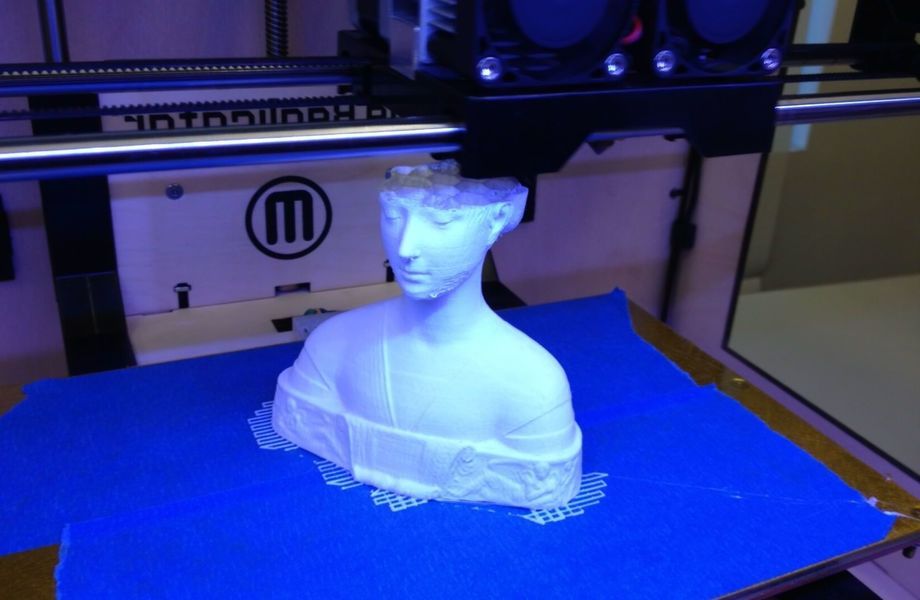
And don’t worry about using the machine as it shouldn’t be difficult at all, with the printer’s 5.5-inch full-color LCD screen and well-developed user interface. Formlabs also makes all of its software in-house, so the slicer is specifically meant to work with Formlabs printers.
So, is the multi-thousand-dollar price tag of the Formlabs 3L out of reach for most consumers? Its huge build volume, along with its insane detail quality and reliability, make the machine worth it for many. As such, it only makes sense that I give the Form 3L the title of Premium Choice.
- Huge build volume
- Super reliable
- Insane print quality and detail
- Absurdly high part accuracy
- Full of sensors for smooth user experience
- Easy-to-use touchscreen user interface
- Expensive
- Can only use proprietary resin
Check Latest Price
4.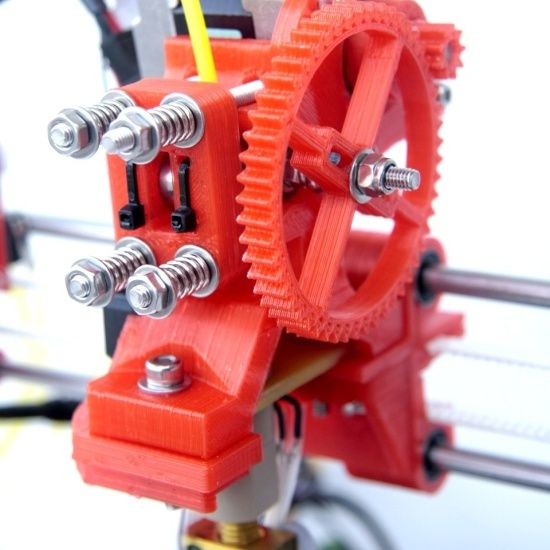 Phrozen Sonic Mega 8K (Large Print Volume)
Phrozen Sonic Mega 8K (Large Print Volume) 3D Printer Type: LCD | Material: Resin | Build Volume: 330 x 185 x 400 mm
Phrozen is another high-end manufacturer of resin 3D printers, and the Phrozen Sonic Mega 8K is one beast of a printer. Out of all of the printers on this list, and even those not included, the Sonic Mega 8K has the largest build volume, boasting a usable space of 330 x 185 x 400 mm.
But the “Mega” in the name of this printer doesn’t just relate to the large build volume of the printer, but also the print quality. Moreover, Phrozen states that this machine can achieve a printing accuracy of just 43 microns. While this isn’t as low (detailed) as the Formlabs 3L’s 25-micron accuracy, it’s still excellent and will bring you more detail in prints than you probably ever need.
This high level of detail offered by the Sonic Mega is possible through the printer’s 8K resolution Mono-LCD screen.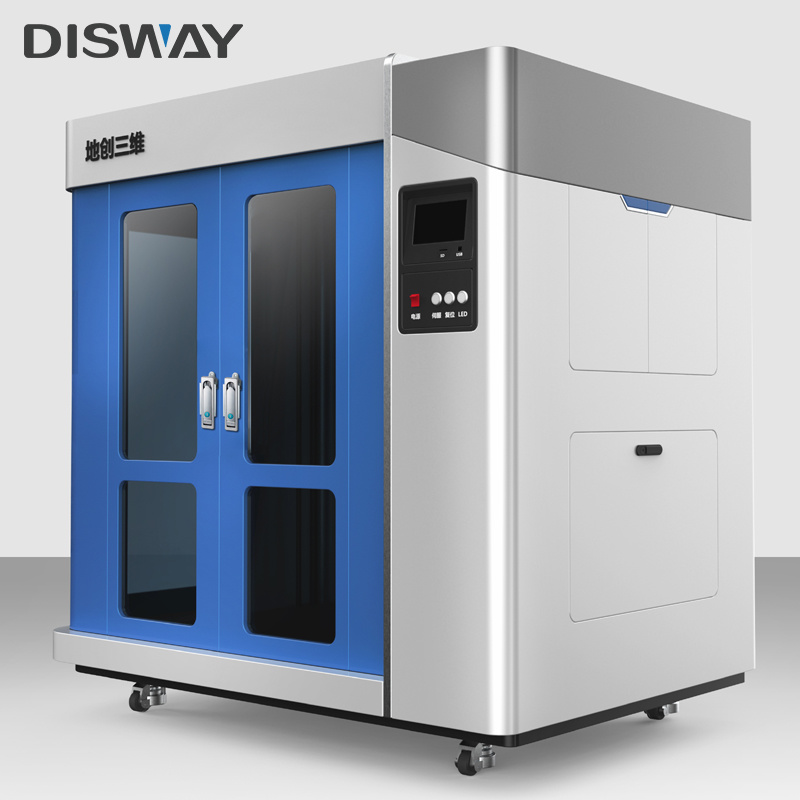 The 405-nm ParaLED Matrix 3.0 lighting source also contributes to the high-quality prints produced by the printer and is known for its reliability.
The 405-nm ParaLED Matrix 3.0 lighting source also contributes to the high-quality prints produced by the printer and is known for its reliability.
On top of the electronics being superb, the mechanical aspects of the Sonic Mega 8K are also note-worthy.
There are not one but two high-end linear rails for the Z-axis movement of the printer. This provides super stable motion as the build plate moves up throughout the print job, significantly reducing the chances of issues like layer wobbling.
Additionally, the entire frame of this printer is constructed of metal. While this makes the printer pretty heavy, it shows that the printer isn’t some cheap Chinese garbage, and you get your money’s worth. And, on this note, the Phrozen Sonic Mega 8K isn’t a cheap printer, costing a little over $2000.
But what I love most about the Sonic Mega 8K is how Phrozen calibrates all of their printers before sending them out. This shows the exceptional service quality of the manufacturer and ensures that you can get the printer up and running in no time, with no issues.
Overall, the Phrozen Sonic Mega 8K is the perfect printer for small businesses who want to print massive models that are super detailed, as well as individual users (like you!) who have big ideas. While I myself don’t have this printer, there’s one in my college’s MakerLab, and I love to use it to print PC case parts and large and complex art pieces.
- Arrives pre-calibrated and tested
- Good for maker labs and small businesses
- Reliable
- Sturdy build structure
- Super impressive detail from 8K screen
- Large build volume
- Expensive
Get Discount (Official Store)
Check Latest Price
5. Peopoly Phenom Prime (Most Accurate MSLA)
Peopoly Phenom Prime (Most Accurate MSLA) 3D Printer Type: MSLA | Material: Resin | Build Volume: 276 x 155 x 400 mm
Peopoly is one of the most reputable and high-quality 3D printer brands in the world, and they specialize in making resin printers. The Peopoly Phenom Prime is perhaps my favorite printer from this company due to its decently large build volume of 276 x 155 x 400 mm. This size should be big enough for most large resin models, like cosplay parts, desk figures, and more.
But the Phenom Prime is different from some of the other printers on this list because it uses MSLA technology instead of SLA. For reference, MSLA uses a masked (hence the “M) LCD screen to project light onto an entire layer at one time, while regular SLA technology projects light to sections of a layer. As such, MSLA printers, including the Phenom Prime, are almost always faster at printing than your typical SLA printer.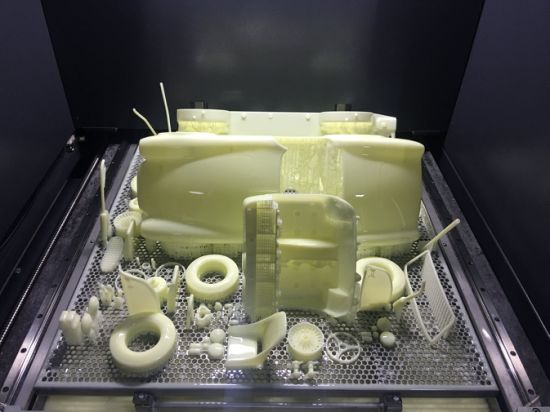
On this note, Peopoly states that their printer is about 500% faster than the Formlabs Form 3, a printer that’s already considered pretty fast. And what’s even better is that this extra speed doesn’t come at 500% times the price. The Peopoly Phenom Prime is pretty reasonably priced, with a price tag under $2000, well within the means of most individual consumers and small businesses.
As for the details, the Phenom Prime lives up to the “Prime” in its name, boasting an LCD screen with 5K+ pixel resolution and an XY resolution of 51 microns. While 51 microns isn’t nearly as precise or detailed as the 25 microns offered by other printers, it’s very impressive for an MSLA machine, which is why we’ve titled the Prime the Most Accurate MSLA.
It’s also worth noting how the build quality of the frame of the Phenom Prime, as you can tell Peopoly really put in the hours making sure the printer both looked nice and performed well. Moreover, the machine uses dual Z-axis linear rods for stable movement along the Z-axis and integrates a full UV-blocking window panel on the frame.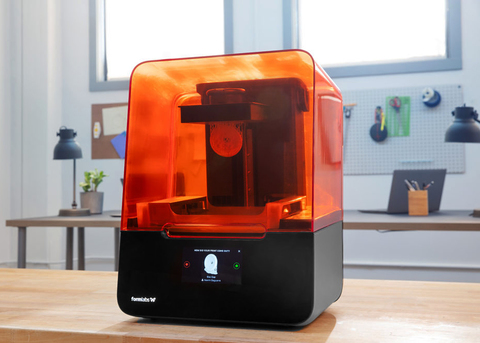 The rough black exterior of the frame is also a great touch for visual appearances.
The rough black exterior of the frame is also a great touch for visual appearances.
The cooling on the Phenom Prime is another feature I must mention, as cooling for resin printers is often overlooked. Peopoly redesigned the entire cooling system from their previous printers resulting in a better ventilated and cooler VAT as well as less noise.
Using the printer should also be a breeze as the manufacturer added a touchscreen LCD with a well-built graphical user interface. Navigating the interface to start prints, clean the VAT, and perform other actions is super easy!
At the end of the day, the Peopoly Phenom Prime is an almost flawless resin printer. While it’s not as accurate as some SLA machines and doesn’t have automated leveling, the machine is extremely fast, looks epic, and can still achieve respectable detail. And, best of all, it’s not even that expensive!
- Impressive accuracy and detail on prints
- Well-built interface for touchscreen display
- Visually appealing
- Very fast
- A good bang for your buck
- No automated leveling
Check Latest Price
6.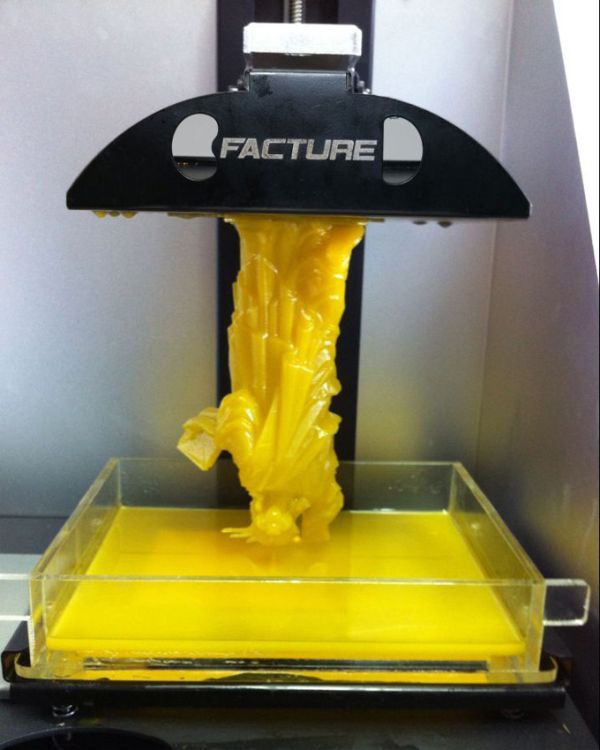 Phrozen Sonic Mighty 4K (Quality Prints)
Phrozen Sonic Mighty 4K (Quality Prints) 3D Printer Type: LCD | Materials: Resin | Build Volume: 200 x 125 x 220 mm
Our last large resin 3D printer for you is the Phrozen Sonic Mighty 4K, and boy is it mighty. This SLA printer is a lot more affordable than some of the other options on the list and boasts a maximum build volume of 200 x 125 x 220 mm. Compared to some of the other printers on this list, that isn’t too much, but it’s certainly larger than your average resin printer and should be adequate for most of your print ideas.
What I love most about the Sonic Mighty 4K is the print quality it produces. As indicated by the name, the Sonic Mighty uses a 4K resolution LCD screen, which is perfect for printing heavily-detailed models like miniatures. And, because of the large print space, you can print many minis at once (or one large-and-detailed part).
Side note: we ranked the baby brother Sonic Mini 4K as one of the top 3D printers for miniatures.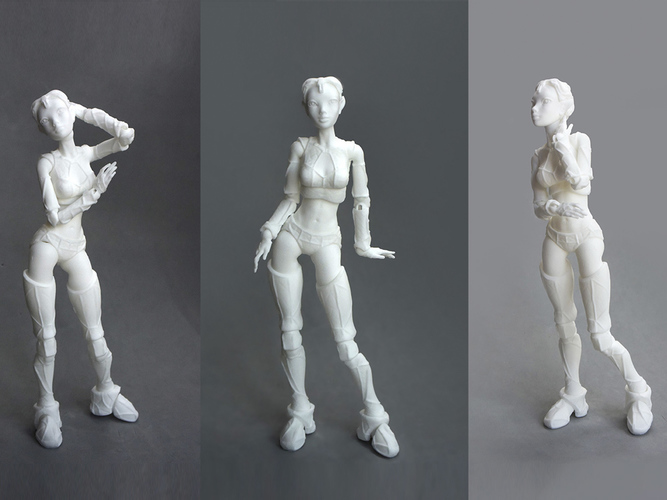
The Phrozen Sonic Mighty also can print super fast compared to your regular SLA printer. According to the manufacturer, the Sonic Mighty has a maximum print speed of 80 mm/hour, but, to be honest, I was only able to get it to around 70 mm/hour before running into defects.
I also want to point out the sturdiness of the Sonic Mighty, which contributes heavily to the machine’s high-quality printing process. Like many of the other printers on this list, the Mighty has two Z-axis linear rails, which ensure no wobbling for the print bed. The print surface carriage is also all-metal, so while this makes the printer heavier, it won’t break anytime soon.
So if you want high-quality prints at a bargain price, the Phrozen Sonic Mighty 4K is the large resin 3D printer for you. The printer’s 4K screen and stable build structure allow it to produce super high-end models. Additionally, it’s a very fast printer, even when it’s not running at its true maximum speed.
- Touchscreen user interface
- Stable build structure
- 4K screen for impressive detail on prints
- Heavy
- Not too large of a print space
Get Discount (Official Store)
Check Latest Price
Why Buy a Large Resin 3D Printer?
In the 3D printing community, resin 3D printers are usually considered best for printing small models, like detailed miniatures and other models of that genre.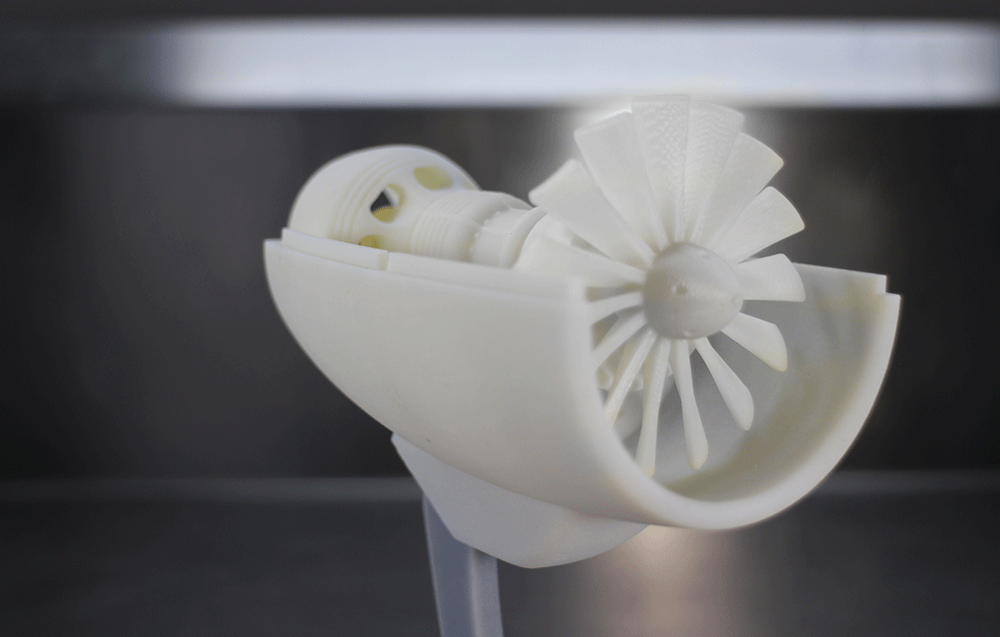 However, if you want to print larger models that still have impeccable detail, you’ll need a resin printer with enough space to match your creativity. That’s why you need a large resin 3D printer for all your big ideas, from cosplay armor to a trophy!
However, if you want to print larger models that still have impeccable detail, you’ll need a resin printer with enough space to match your creativity. That’s why you need a large resin 3D printer for all your big ideas, from cosplay armor to a trophy!
What is the Difference Between FDM and Resin Printing?
Source: Youtube Uncle JessyIf you’re deciding between going with a big FDM 3D printer or a large resin 3D printer, you’re probably curious as to what the big differences are between these two technologies.
When someone says “3D printer”, most people probably imagine an FDM 3D printer. These printers use a printhead that heats up the plastic filament and lays it down on a surface, layer after layer, to form the desired model.
On the other hand, resin printers work with a container of liquid resin and a high-power UV light. The light solidifies the liquid resin in a very precise manner so that the only solid is the desired model. For this printing technology, a few steps of post-processing are necessary to make the model not soft.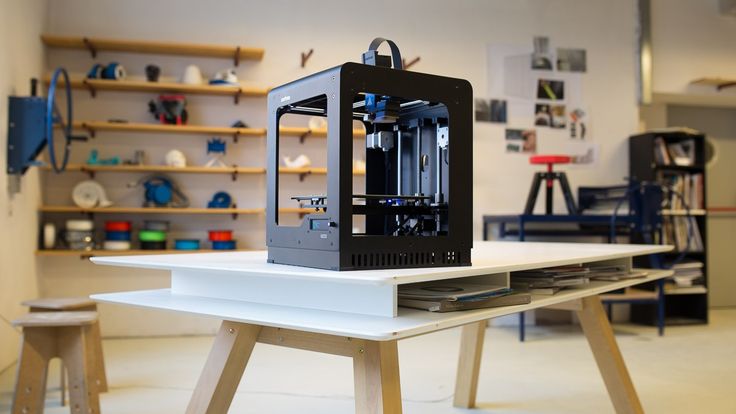
As you probably know, the quality is significantly better on resin printers compared to FDM machines. Even a budget resin printer will yield models that look lightyears better than those printed on a $5,000+ FDM 3D printer. Moreover, resin 3D prints show no visible layer lines and have immaculate quality for small details.
While resin printers take the cake when it comes to the quality of prints, FDM machines are a lot better for printing strong models. Though there are some “strong” resins that you can use, there are a lot more truly strong filament materials for FDM printers, like polycarbonate, nylon, PETG, and ABS.
Overall, I love both my FDM and resin printers. I like to use my FDM printers to print models that I want to be strong, like a part for my robotics team or a locking hinge. However, I always prefer my resin printers whenever I want to print something showy for display, like an Eiffel tower model to rest on my PC case or cool chess pieces.
Is PLA Stronger than Resin?
Source: Youtube My Tech FunA common concern people have about resin 3D prints is their strength.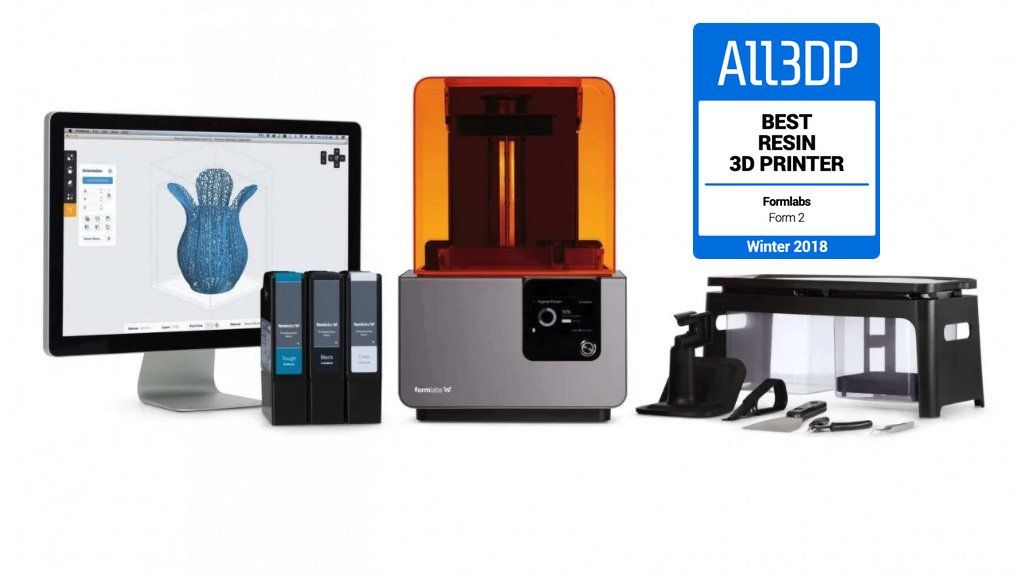 Sadly, resin prints aren’t super strong, even when compared to traditional FDM 3D prints. Moreover, resin is typically naturally weaker than PLA filament.
Sadly, resin prints aren’t super strong, even when compared to traditional FDM 3D prints. Moreover, resin is typically naturally weaker than PLA filament.
Not by too much, though! Large resin 3D prints, like the ones you might be making on the printers I recommended above, should be strong enough to withstand a few drops on the ground. And maybe even more than that!
Of course, you shouldn’t be using a resin 3D print on any machinery or place of high physical stress. But you can print things like a headphone stand or phone holder in resin and be totally fine!
Do You Need to Cure Resin Prints?
Source: Youtube Uncle JessyIf you’ve been scrolling 3D printing subreddits, you’ve probably been fascinated by the insane quality and detail of resin prints. But this is only possible if you cure (and wash) your resin 3D prints.
Unlike FDM 3D printing, post-processing your 3D prints is more of a requirement than a suggestion for resin prints. That’s because, without washing and curing your model, the resin will be soft and not as rigid as you want it to be.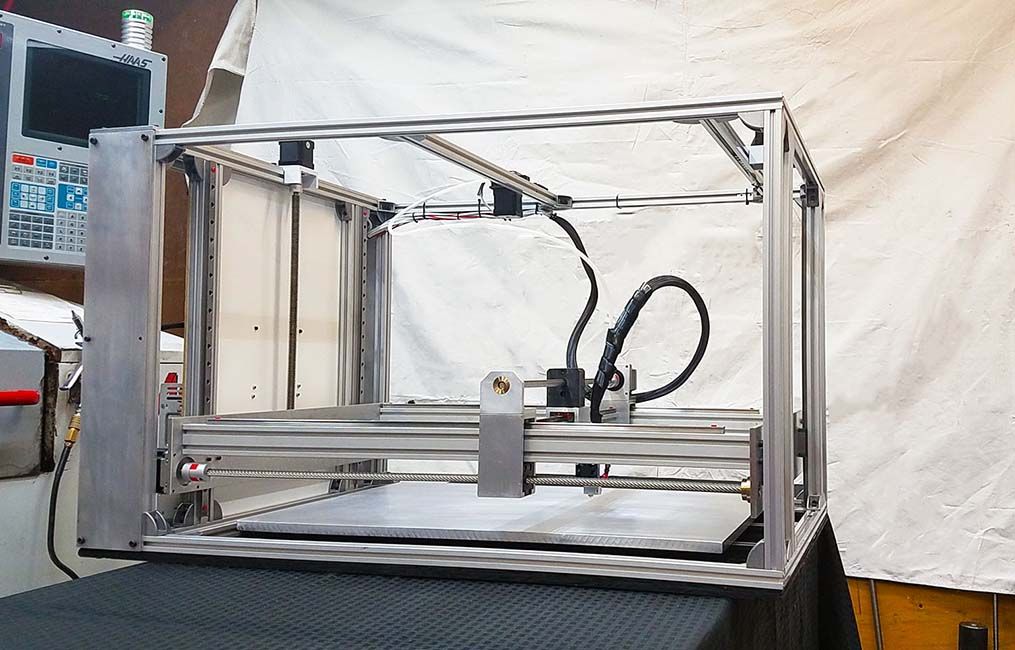
But don’t worry!
Washing and curing your resin prints is as easy as soaking them in water or a solvent (e.g. acetone) and then putting the model under a UV light for a few minutes. You can read more about this process in our article all about post-processing resin prints! Or you can check out our article on the best wash and cure stations here.
Why is Ventilation Important for Resin Printing?
Source: Youtube Trash Dragon HobbiesVentilation is another concern many interested in resin 3D printing have, and it’s one you should have too!
Unfortunately, the liquid resin used for resin 3D printing is considered toxic. I mean, just take a whiff of that stuff; it’s not exactly your favorite Yankee candle!
Because it’s toxic, you obviously shouldn’t come into physical contact with the liquid. But, you also need to keep your resin in a ventilated environment as the toxic chemical lets off a lot of fumes, hence the intense smell.
Keeping your resin printer in a ventilated area can be as simple as opening a window or two every time you lift the lid of the printer.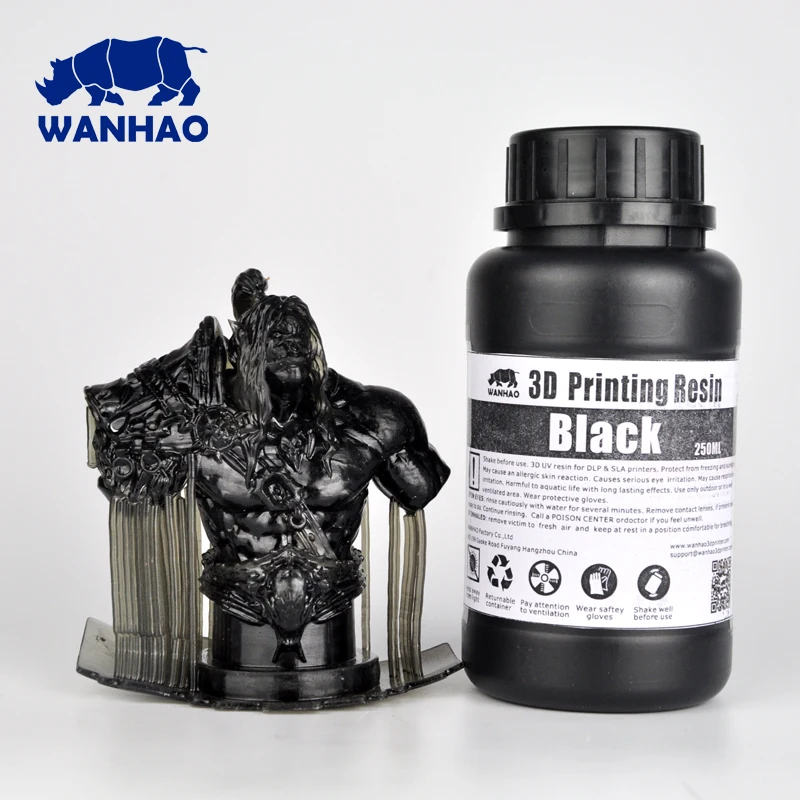 Personally, I keep a box fan that I got from Costco in my printer lab, and I leave it on all the time any resin isn’t in an air-tight container. I also keep the door open and utilize my house’s central air to get those fumes outside.
Personally, I keep a box fan that I got from Costco in my printer lab, and I leave it on all the time any resin isn’t in an air-tight container. I also keep the door open and utilize my house’s central air to get those fumes outside.
Conclusion
There are tons of resin 3D printers on the market, but most offer small print volumes with limited features. If you want to print large, though, there are some options for a large resin 3D printer.
For the best value large resin 3D printer, I highly recommend the Elegoo Saturn, Anycubic Photon Mono X, or the Phrozen Sonic Mighty 4K. These printers all have 4K screens that offer impressive details and have decently-large maximum print volumes. For even better accuracy, you might want to get the Peopoly Phenom Prime, but only if you’re willing to spend a little extra.
Finally, for the more professional users, I’d recommend either the Formlabs Form 3L or the Phrozen Sonic Mega 8K. These printers put out an absurd amount of detail in prints, and both have very large build areas.
Top 10 Resin 3D Printers of 2022 (each price range)
Resin 3D printers use SLA, DLP, or LCD technology to cure liquid resin, producing sharp, high-resolution prints at high speed. You'd be surprised how many industries use these machines, from jewelry to dentistry.
That's why we've ranked the best resin printers in every price range, from $150 to $5,000+, so you can find the perfect machine for your hobby projects or business. nine0003
Contents
- Best cheap resin 3D printers (under a thousand dollars)
- Anycubic Photon Mono is a great low cost resin 3D printer
- ELEGOO Mars Pro / Mars 2 Pro is the best cheap resin 3D printer
- Anycubic Photon Mono 4K
- Phrozen Sonic Mini 4K
- Elegoo Mars 3
- Elegoo Saturn
- Phrozen Sonic Mighty 4K
- Anycubic Mono X is a great budget photopolymer 3D printer
- Curing and Cleaning Stations
- Anycubic Wash & Cure.
- Elegoo Mercury Plus
- Prusa SL1S Speed
- Peopoly Phenom mSLA Printer - large photoresin 3D printer with huge build volume
- Buyer's Guide - What to Consider When Buying a
- RGB Photopolymer 3D Printer vs.
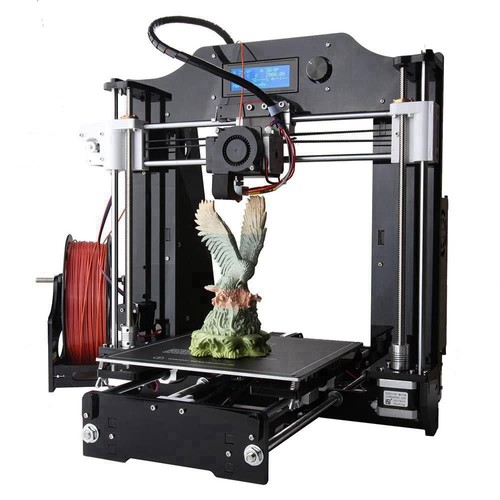 LCD Screens - Differences, Advantages/Disadvantages
LCD Screens - Differences, Advantages/Disadvantages - Post-processing equipment
- How does a photopolymer 3D printer work?
- Resin 3D printing technologies
- SLA
- DLP
- MSLA/LCD
- LFS
- DLS
- How much does a resin 3D printer cost?
- Resin 3D Printer Applications
- Resin 3D Printing vs. Filament (FDM)
- Resin 3D Printing vs Selective Laser Sintering (SLS)
- FAQ
Best cheap resin 3D printers (under a thousand dollars)
Anycubic Photon Mono is a great low cost resin 3D printer
- Price: $249
- Assembly volume: 120 x 80 x 165 mm
- Screen resolution: 2560 x 1620 pixels
- Screen size: 6″ 2K monochrome LCD
- XY resolution: 51 microns
- Speed: 50 mm/h
- Cleaning/Cure: Anycubic Washing and Curing Station nine0091
- Price: $250 / $280 - Available on Amazon here
- Print volume: 129 x 80 x 160 mm
- Screen resolution: 2560 x 1620 pixels
- Screen size: 6.08″ 2K monochrome LCD
- XY resolution: 50 microns
- Speed: 30-50 mm/h
- Cleaning/Cure: Elegoo Mercury Plus/X 9 Wash and Curing Station0010 The
- Price: $289 nine0009 Print volume: 165 x 132 x 80 mm
- Screen resolution: 3840 x 2400
- Screen size: 6.23" 4K monochrome LCD
- XY resolution: 35 microns
- Speed: 50 mm/h
- Cleaning/Cure: Anycubic Washing and Curing Station
- Price: $349 - Available at Phrozen official store here / Available on Amazon here
- Print volume: 134 x 75 x 130 mm
- Screen resolution: 3840 x 2160 pixels
- Screen size: 6.1″ 4K monochrome LCD
- XY resolution: 35 microns
- Speed: 80 mm/h
- Cleaning/Cure: Phrozen Cure and Phrozen Ultra-Sonic Cleaner
- Price: $349
- Print volume: 143 x 90 x 165 mm
- Screen resolution: 4098 x 2560 pixels
- Screen size: 6.6″ 4K monochrome LCD
- XY resolution: 35 microns
- Speed: 1.5-3 seconds per layer
- Cleaning/Cure: Elegoo Mercury Plus/X 9 Wash and Curing Station0010
- Price: $499
- Print volume: 192 x 120 x 200 mm
- Screen resolution: 3840 x 2400 pixels
- Screen size: 8.
 9″ 4K monochrome LCD
9″ 4K monochrome LCD - XY resolution: 50 microns
- Speed: 30-40 mm/h
- Cleaning/Cure: Elegoo Mercury Plus/X Cleaning and Curing Station
- Price: $549
- Printing area: 200 x 125 x 220 mm
- Screen resolution: 3840 x 2400 pixels
- Screen size: 9.
 3″ 4K monochrome LCD
3″ 4K monochrome LCD - XY resolution: 52 microns
- Print speed: 80 mm/h
- Cleaning/Cure: Phrozen Cure and Phrozen Ultra-Sonic Cleaner
- Price: $599
- Printable area: 192 x 120 x 245 mm
- Screen resolution: 3840 x 2400 pixels
- Screen size: 8.
 9″ 4K monochrome LCD
9″ 4K monochrome LCD - XY resolution: 50 microns
- Speed: 60 mm/h
- Cleaning/Cure: Anycubic Wash & Cure Statio
- Price: $1,999 - available at Prusa store here
- Print volume: 120 x 68 x 150 mm
- Screen resolution: 2560 x 1620 pixels
- Screen size: 5.96″ 2K monochrome LCD
- XY resolution: 47 microns
- Print speed: 50 mm/h
- Cleaning/curing: Original Prusa CW1S
- Price: $1,999 - Available from Matterhackers here
- Print volume: 276 x 155 x 400 mm
- Screen resolution: 3840 x 2160 pixels
- Screen size: 12.5″ 4K LCD
- XY resolution: 72 microns
- Print speed: 75 mm/h
- Cleaning/Cure: Peopoly Curing Box
- Price: $3,499
- Assembly volume: 145 x 145 x 185 mm
- XY resolution: 25 microns
- Print speed: 70 mm/h
- Clean/Cure: Formlabs Form Wash & Cure
-
8.9-inch monochrome LCD-display 4k
-
High print speed 60 mm per hour
-
Short time of the exposure 1.5-2 seconds
-
Rugged CNC machined aluminum housing
-
Supports 12 different languages
-
6.
 08 inch 2K HD monochrome LCD0679 Workshop Anycubic Photon
08 inch 2K HD monochrome LCD0679 Workshop Anycubic Photon - Has a large build volume of 192mm x 120mm x 245mm, allowing us to maximize our creativity and imagination.
- Offers an 8.9-inch 4K monochrome LCD display with a resolution of 3840 x 2400 pixels, which can return print information to its original form, and has a lifespan of up to 2000 hours. nine0010
- Has a short exposure time of 1.5-2 seconds and delivers a high print speed of 60mm per hour, which is 3 times faster than a standard 3D printer.
- Features a dual effect cooling system specifically designed for consistent print performance and longevity.
- Uses a UV LED matrix to distribute light more evenly throughout the print.
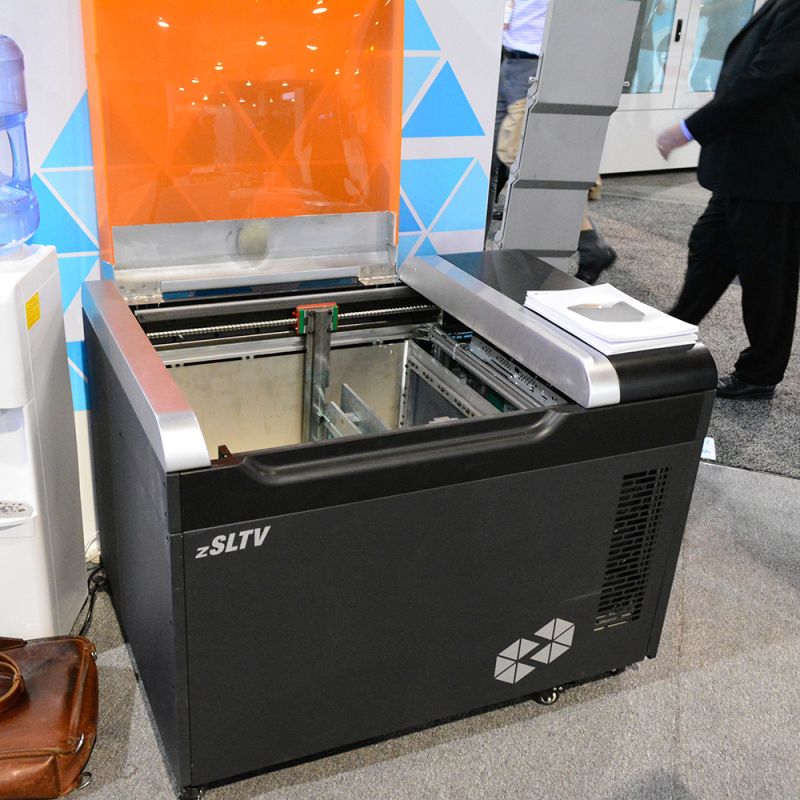
- Comes with a dual Z-axis that prevents Z-axis wobble and improves printing efficiency. nine0010
- Has Wi-Fi connectivity for remote monitoring of print operations.
- The firmware is unstable, but this can be fixed by updating it.
- Vapors seem very smelly, so a more well ventilated print shop is required.
- Has a COB UV LED light source that emits much more stable UV light, as well as a 2K monochrome LCD display that improves print specifics and improves accuracy.
 nine0010
nine0010 - Comes with a 6.08-inch 2K HD monochrome LCD, which has a much longer life and high stability in long-term printing.
- It only takes 2 seconds to apply cured resin to one layer, which can greatly improve print quality.
- Features a durable CNC machined aluminum body and its state of the art sandblasted build plate also has excellent adhesion throughout the print for more reliable printing. nine0010
- Supports 12 different languages, allowing customers from all over the world to easily use this 3D printer. (Japanese, Dutch, Korean, French, German, Russian, Italian, Spanish, Turkish and Portuguese).
- Offers a replacement resin tank made from a special engineering plastic that is environmentally friendly and biodegradable.
- The slicer app is a little hard to use.
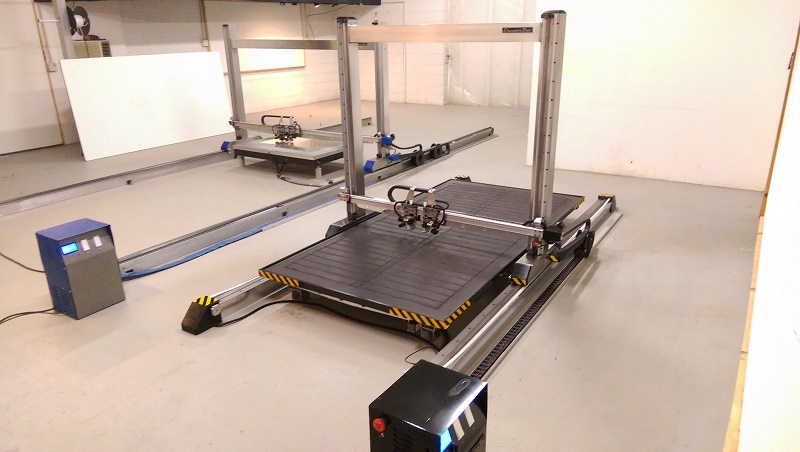 nine0010
nine0010 - Offers a low cost UV LCD 3D printer with faster prototyping and finer details than FDM printers.
- Comes with an advanced UV LED module that provides specialized optical path configuration and even power distribution to help improve prototype accuracy and print productivity.
- Has a self-developed slicing program that creates a 100 MB slicing file in one minute, which is three times faster than others.
 nine0010
nine0010 - Features 24 parallel LEDs for improved print efficiency, cure speed, layer adhesion support, and consistent light output compared to other printers.
- Features a full color touch screen interface, real-time display and print status monitoring, fast bed leveling, strong steel body, strong adhesion, and a temperature warning system for greater safety.
- We are a little limited in the print area because it is a bit small.
- provides exceptional accuracy and accuracy of dynamic ultraviolet radiation with a capacity of 30 W for fast printing, ensuring 4 seconds per layer using a 2560 x 1440 2K HD masking LCD.
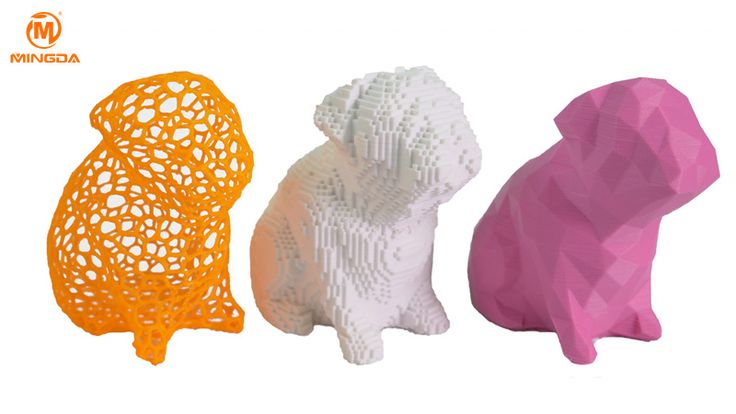 nine0010
nine0010 - Equipped with a dual fan air filtration system for impressive ventilation that uses activated carbon air filtration to effectively minimize odor differences.
- Uses the latest ChiTuBox slicing software for an exceptional user interface.
- Provides easy cleaning of the resin reservoir and a distinctive FEP release film reinforced at both ends. nine0010
- With a print volume of 119 mm x 65 mm x 160 mm, we can produce larger and larger prints one after the other.
- Has an integrated computer board that allows us to print directly from a USB stick.
- The body of the system is all-metal manufactured using CNC cutting technology, which improves the structural system, reduces friction and provides relatively smooth printing.
- The manual is useless because there doesn't seem to be any cleaning or post-processing procedures, and even all the instructions are written in Chinese.
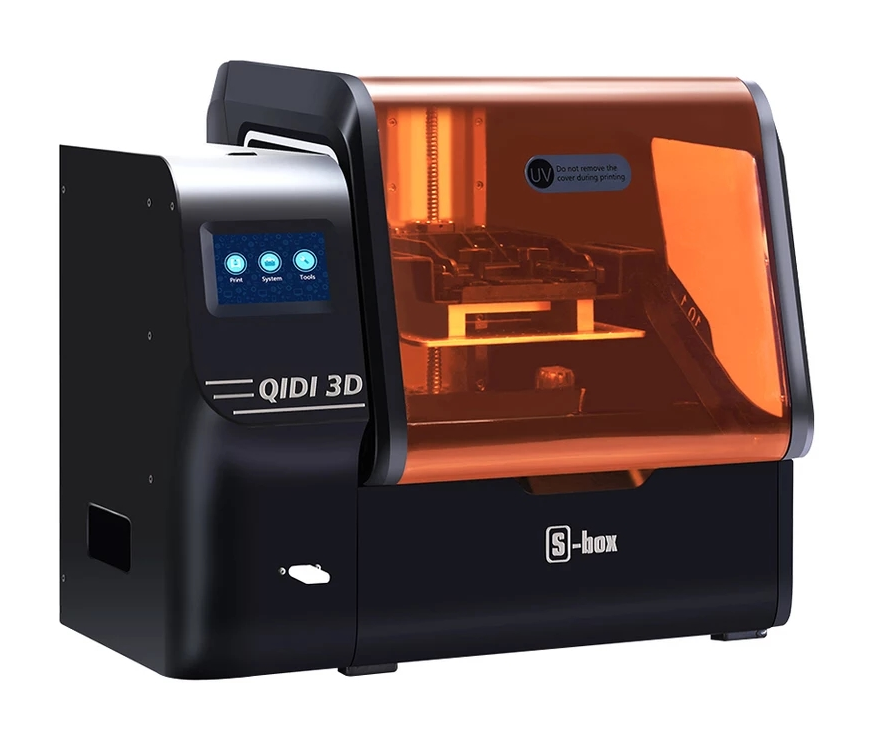 nine0010
nine0010 - It is small and compact, can be stored quickly and easily, and can be used in a variety of contexts, including personal and professional use.
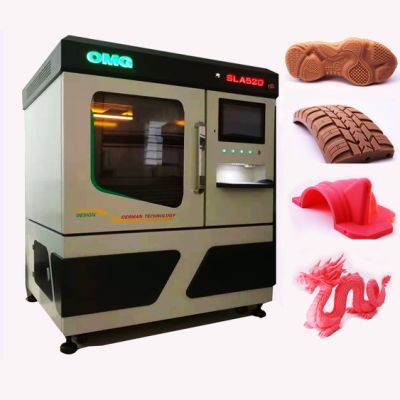
- Features a 3840 x 2160 pixel ultra-high definition display and a 6.1-inch printable area.
- Has the highest PPI (722 PPP) and a print speed of 80 mm per hour at 35 microns.
- Suitable for all LCD resins and even most DLP resins.
- The worktable is not tilted and holds a significant amount of resin.
- Compared to other 3D printers in the same price range, it usually has a smaller build volume.
The new Anycubic Photon Mono printer adds to Anycubic's reputation as a premium manufacturer of affordable LCD 3D printers.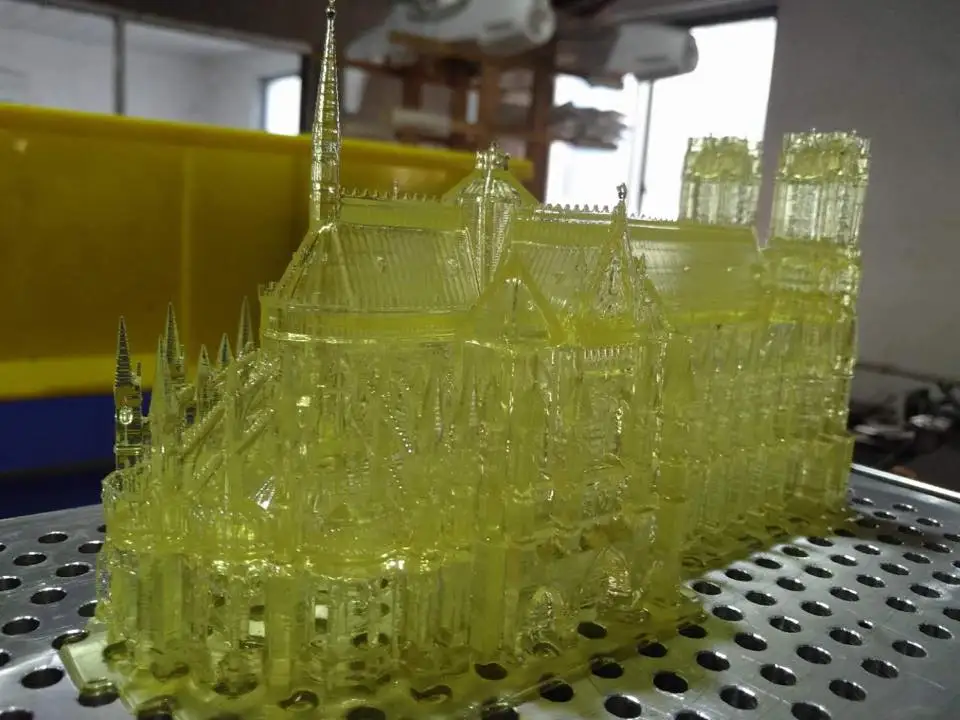 Where you used to pay thousands for an entry-level SLA printer, now printers like the Mono offer great resolution at lower than ever prices. The Photon Mono is a new upgrade from previous models, including greatly increased resin printing speed and other accuracy improvements.
Where you used to pay thousands for an entry-level SLA printer, now printers like the Mono offer great resolution at lower than ever prices. The Photon Mono is a new upgrade from previous models, including greatly increased resin printing speed and other accuracy improvements.
It is equipped with a high quality 2K LCD screen, which is more than enough for most resin projects. But for higher resolution and better quality for really complex figurines or miniatures, we recommend getting the Anycubic Mono X with its 4K LCD screen, which we'll cover in more detail later in this article. nine0003
Perhaps the most notable upgrade is speed - up to a maximum of 50mm/h from previous levels of around 20mm/h on older Photon models. Anycubic has also upgraded the Z axis for more stable printing and better surface finish with a new dual linear motion system.
Overall, we rate the Anycubic Photon Mono, as well as its competitors in the Sonic Mini and Elegoo Mars lineups, as the best cheap photopolymer 3D printers. But if you have a few hundred dollars to spare and need a better resolution, go for Mono X.0099 anycubic photon mono cheap photopolymer 3d printer.
But if you have a few hundred dollars to spare and need a better resolution, go for Mono X.0099 anycubic photon mono cheap photopolymer 3d printer.
ELEGOO Mars Pro / Mars 2 Pro - Best Cheap Resin 3D Printer
Elegoo Mars is another cheap resin 3D printer, like the Anycubic Photon, which shocked manufacturers with how good it really is. As LCD 3D printing becomes more affordable, accurate and fast, Elegoo is taking advantage of this advantage to create a low cost resin printer that delivers quality and consistency.
An upgraded version of the Mars Pro printer is more precise with an updated Z-axis linear guide system that smoothes layers and makes each individual layer line less obvious, improving surface quality.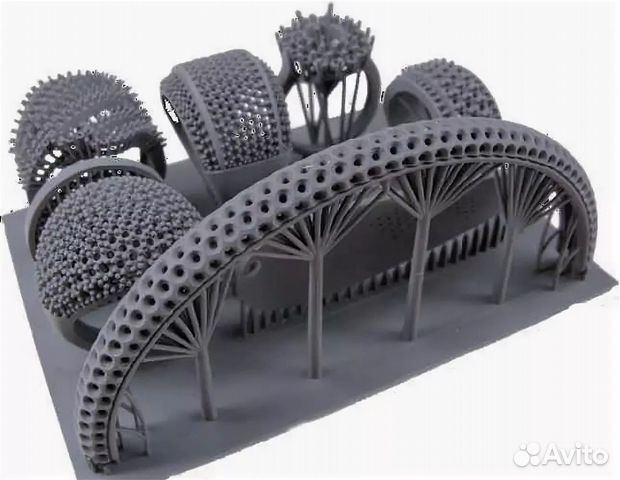 There are also a number of safety improvements, such as a silicone seal that prevents resin from leaking on the 3D printer cover. nine0003
There are also a number of safety improvements, such as a silicone seal that prevents resin from leaking on the 3D printer cover. nine0003
The printer is equipped with a 2K LCD projector and the minimum layer height is only 0.01mm. Elegoo Mars Pro comes with its own 3D resin slicer called CHITUBOX and has a nice max build volume of 115 x 65 x 150mm. It's also fast enough for a budget photopolymer 3D printer.
Elegoo also sells some of the cheapest resins on the market. You can buy them here.
Anycubic Photon Mono 4K
Equipped with a 6.23″ 4K high-resolution monochrome LCD, the Anycubic Photon Mono 4K is an affordable, performance-oriented 3D printer for the discerning but budget-friendly resin maker. nine0003
nine0003
The construction volume of 165 x 132 x 80 mm is small by FDM standards. Although, as befits resin 3D printers, its volume is slightly larger than most, and it certainly makes up for it with exceptional precision and detail thanks to its 35 micron XY resolution.
In testing, Anycubic Photon Mono 4K proved to be ready to work with any highly detailed models and decorative elements, even quite large ones. Articulated parts, board game figures and even articulated miniatures, the Mono 4K does it all. nine0003
Cast on a few copies of a small part and the Anycubic Photon Mono 4K is ready, making it suitable for small businesses and hobbyists alike. The print speed is up to 50mm/h and the printer easily prints layers in less than 2 seconds.
From a usability standpoint, we'd like to see desirable features such as resume printing and Wi-Fi connectivity. Anycubic's Photon Workshop slicing software is a functional, if unremarkable, slicer. Fortunately, the Anycubic Photon Mono 4K's compatibility with third-party software such as Lychee and ChiTuBox means you don't have to be tied to Anycubic's slicing software.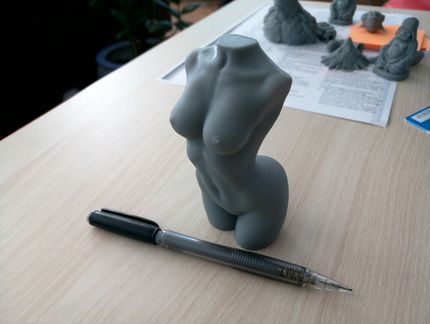 nine0003
nine0003
If you're after impressive 4K screen fidelity, the Anycubic Photon Mono 4K's delivers hassle-free, high-resolution printing at a great price.
Phrozen Sonic Mini 4K
At an affordable price, the Phrozen Sonic Mini features a powerful 4K 6.1-inch LCD screen that delivers 35µm quality and two-second layering speed.
This is a powerful, inexpensive photoresin 3D printer with everything you need to print, and while if you need more print volume you can go for the Sonic Mighty 4K (more on that later!), if size isn't a big deal, the Sonic Mini 4K is more than fit. nine0003
Phrozen claims the Sonic Mini 4K is ideal for resin mold printers, as well as miniatures and desktop models.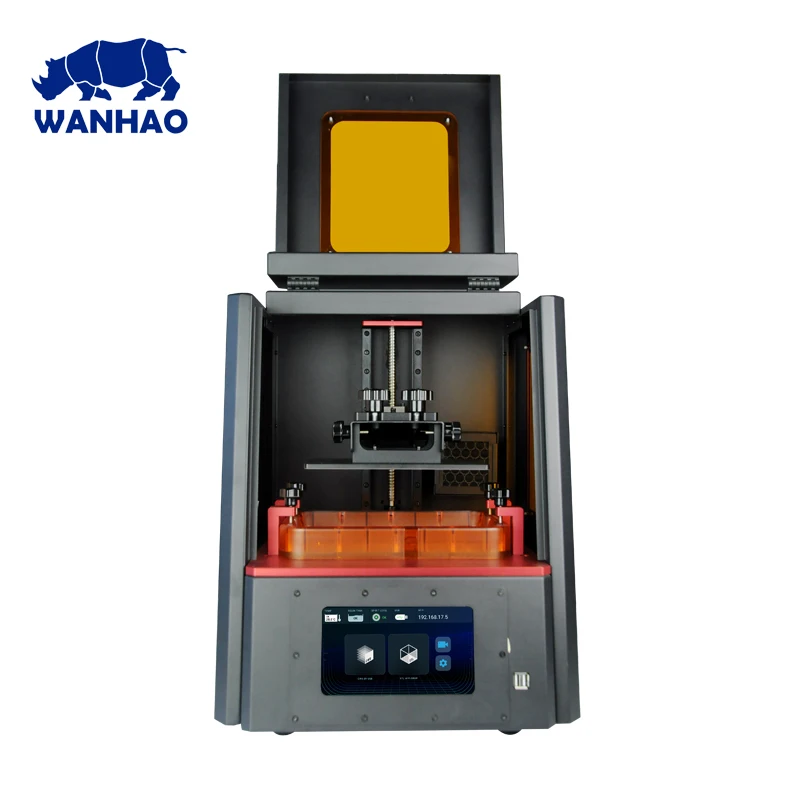
Elegoo Mars 3
Featuring an Ultra 4K resolution LCD screen and Elegoo's latest mSLA technology, Elegoo Mars now has 30% more accurate XY (35µm) resolution than Mars 2, as well as a 37% larger build volume. For an extra $100, this is a very attractive deal for those looking to get higher-end resin 3D printing.
Other features include an improved light source for more uniform resin curing - even over a larger build area. Built-in 36 high-power LED lamps and a new lens provide higher accuracy, as well as an improved heat sink and cooling fan, which extends the life of the printer and enhances its durability. nine0003
Elegoo Saturn
Featuring an 8.9" 4K monochrome LCD screen for fast layer curing, the Elegoo Saturn greatly outperforms the standard models by printing 60% faster than the Elegoo Mars Pro, printing a layer every 2-3 seconds. nine0003
You get a number of other key improvements for your money, the most notable of which is a larger build area that turns the Elegoo Saturn into a 3D printer for printing large hard resin models, as well as the ability to print multiple small models at the same time in one batch.
Improved precision with the Saturn's double linear Z-axis guide makes the Saturn printer more stable than ever, ensuring accurate and uniform printing. And in case you're a fan, the Elegoo Saturn also has an Ethernet port on the back to keep things fast and efficient. nine0003
Phrozen Sonic Mighty 4K
If you're looking for an affordable resin 3D printer with a large enough footprint for mass production of models or large resin prototypes, the Phrozen Sonic Mighty 4K even outsizes the Elegoo Saturn. nine0003
With a strong and reliable Z-axis that delivers print accuracy up to a maximum print height of 22 cm, it offers good print quality, especially with the 4K resolution LCD screen. It also prints fast, with two-second layer printing.
While Phrozen recommends using proprietary 3D printer resins, the Sonic Mighty 4K is compatible with most third-party resins (but check first). So if you have spare resins left over from a previous 3D printer, you should be fine. nine0003
Anycubic Mono X is a great budget photopolymer 3D printer
Anycubic's original budget Photon 3D resin 3D printer is still one of the most popular 3D printers in the world, and now the Mono X proves that the company can compete with higher-end machines. Mono X can print 3 times faster than standard photopolymer printers at speeds up to 60mm/h, and thanks to the 4K LCD screen, it can create very precise and sharp details. nine0003
In addition, the upgraded Mono X Z-axis improves stability and makes the surface smooth, unaffected by external factors such as vibrations. The result is jewelry models and miniatures where the layer lines are barely visible.
Another big benefit is WiFi printing, so you don't have to keep unplugging your SD or USB card when printing multiple designs throughout the day. The large 3.5" touch screen makes it easy to navigate, and with a larger build volume, you can print multiple jewelry models or desktop miniatures at the same time.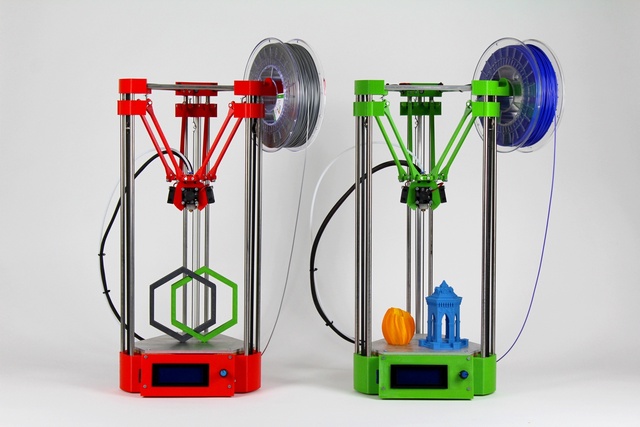 Overall, this is one of the best budget photopolymer 3D printers out there. nine0003
Overall, this is one of the best budget photopolymer 3D printers out there. nine0003
Curing and Cleaning Stations
Since washing and curing is an inevitable part of resin 3D printing, we have compiled some of the best washing and curing stations to include in your printing system to save you the hassle and mess of subsequent printing. processing.
Anycubic Wash & Cure.
Anycubic Wash & Cure is a versatile station compatible with the vast majority of photoresin printers. Thanks to Anycubic's recent price cut, Wash & Cure is under $100. nine0003
The flush mode has adjustable flush cycles including 2, 4 and 6 minutes. Curing mode uses a broad spectrum UV light of 356 nm and 405 nm mounted on a 360° rotating platform to ensure uniform curing of any and all prints 115 x 65 x 165 mm or smaller.
Anycubic has simplified the entire rinsing and curing process with a “set it and forget it” design—select rinsing or curing on the touch button interface and you're done.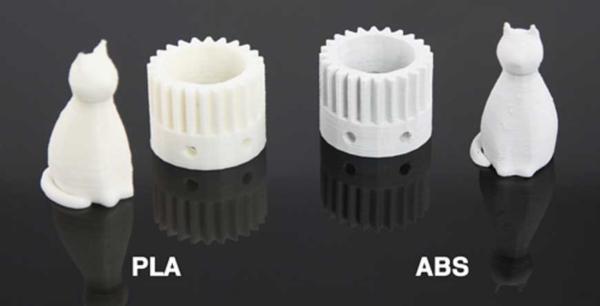 Station blocks 99.95% UV radiation and has an auto-pause feature if the cap is accidentally knocked off. The station has an adjustable bracket that can be fixed on the Anycubic platform if you are working with a Photon Mono series printer.
Station blocks 99.95% UV radiation and has an auto-pause feature if the cap is accidentally knocked off. The station has an adjustable bracket that can be fixed on the Anycubic platform if you are working with a Photon Mono series printer.
Elegoo Mercury Plus
Another all-in-one station, but this time from Elegeoo, the Elegoo Mercury Plus is an easy-to-use option for hands-free finishing.
The allowed maximum print size is 125 x 85 x 160 mm for washing and 140 x 165 mm for curing. You can either use the included cleaning basket or install the Elegoo build plate with models still attached, making it compatible with most if not all photopolymer 3D printers, not just Elegoo machines. nine0003
385nm and 405nm UV lamps and a 360-degree rotatable curing turntable do all the curing work with the ability to enter and control cure times up to 30 minutes on a TFT touch screen. Safety is provided by an anti-UV cap that blocks 99.95% of UV rays and a pause function if the cap comes off during curing.
Anycubic station will cost more, but at around $120 you will complete your 3D printing rig with a quality resin 3D printing station with no mess. nine0099 Best desktop resin 3D printers ($1,000 to $3,000)
Prusa SL1S Speed
Prusa printers are known for being the best RepRap 3D printers. They are so good that over 150,000 printers have been sold, and company founder Josef Prusa has opened his own printer factories to print parts for more printers! Prusa reception. nine0003
Prusa has now moved into the SLA 3D printing sector with the launch of the Prusa SL1 printer based on mSLA technology: using LCD and LED panels to cure photosensitive resin layers. As mentioned earlier, this has the advantage of scalability—multiple parts can be created at the same time without additional time—as well as high accuracy.
As mentioned earlier, this has the advantage of scalability—multiple parts can be created at the same time without additional time—as well as high accuracy.
In addition to the printer, Prusa sells a wash and cure machine that helps wash and cure prints, maximizing the surface finish. The Prusa SL1 has a heavy aluminum chassis designed to anchor the printer to the ground and make it more stable for more accurate printing. It seems to me that the phrase “of course, this is good, this is Prusa” is appropriate here. nine0003
Peopoly Phenom mSLA Printer - large photopolymer 3D printer with huge build volume
We already included the Peopoly Moai 130 in our list, a fantastic DIY SLA 3D printer kit.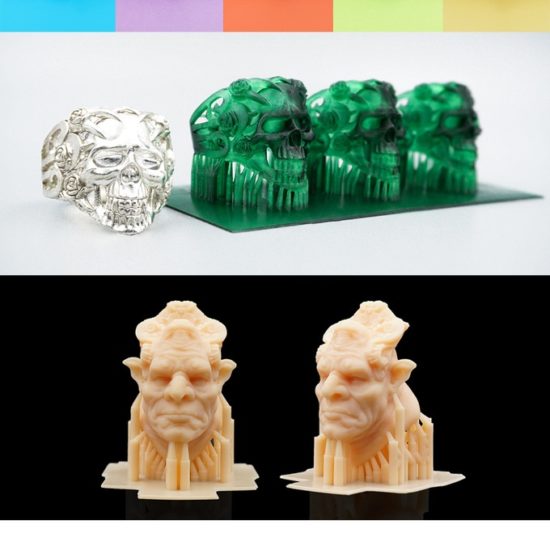 Now Peopoly is back with the Phenom, a large photopolymer 3D printer that combines LCD and LED technology. nine0003
Now Peopoly is back with the Phenom, a large photopolymer 3D printer that combines LCD and LED technology. nine0003
Peopoly Moai has a huge print volume for a photopolymer 3D printer - 276 x 155 x 400 mm, as well as 72-micron resolution. This is practically unheard of as photopolymer printers typically have a much lower build volume than FDM 3D printers. Peopoly recommends using their own resins for 3D printing, which they sell for about $70 per litre.
Overall, this is an impressive and accurate large format resin 3D printer.
Professional Resin 3D Printers ($3,000+)
Formlabs Form 3 - Best Resin 3D Printer
Formlabs has made a name for itself in the 3D printing industry since its initial Kickstarter campaign in 2012. An American 3D printer company was selling a Form 3 SLA 3D printer for 3 49$9 and has since become very popular in the dental and jewelry industries.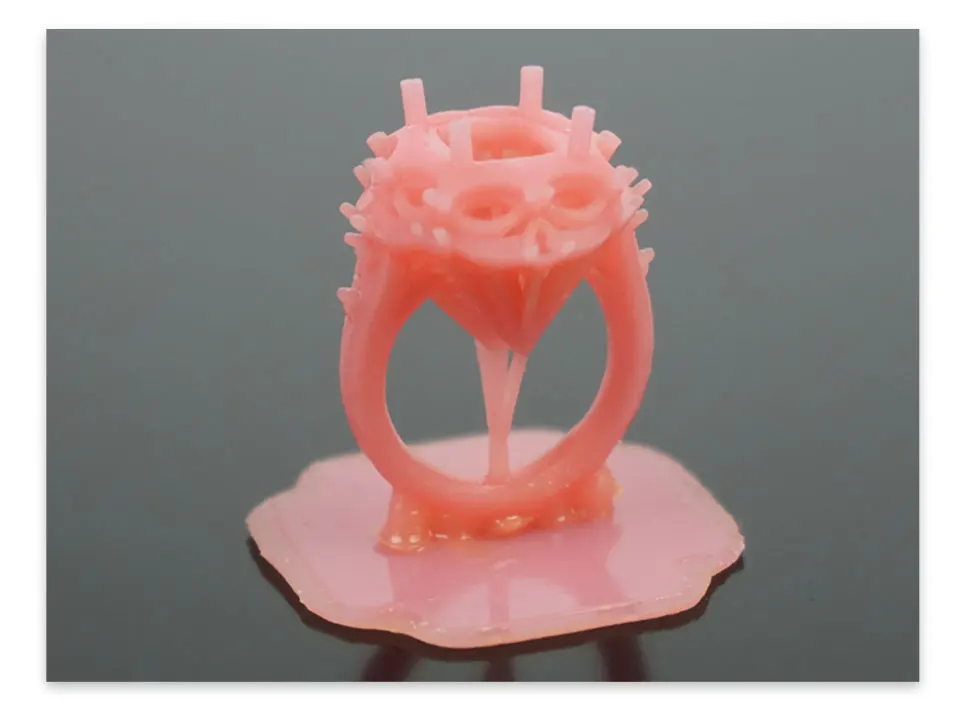
Formlabs resins available here.
TheForm 3 comes with a ton of new features. It features the new benefits of LFS technology as well as a new Light Processing Unit (LPU) to improve the surface finish of resin parts as well as better layer registration. The Form 2 was already fantastic, and these additional features take the Form 3 to a whole new level in desktop SLA printers. nine0003
In addition, the Formlabs Form 3 has an automated resin supply system and uses smart cartridges that automatically fill the resin reservoir, along with many other advanced features. In addition, it is equipped with a resin tray scanning system after each layer and automatically adjusts according to the type of resin used. In addition, the printer has a fantastic touch screen and can be controlled remotely via a WiFi connection.
This UV resin 3D printer has a very good print volume of 145 x 145 x 185mm and is extremely accurate with 25 micron XY resolution. The Formlabs Form 3 is compatible with a wide range of resins, from ceramics, flexible resins, to cast resins, although Formlabs also sells its own high quality resins.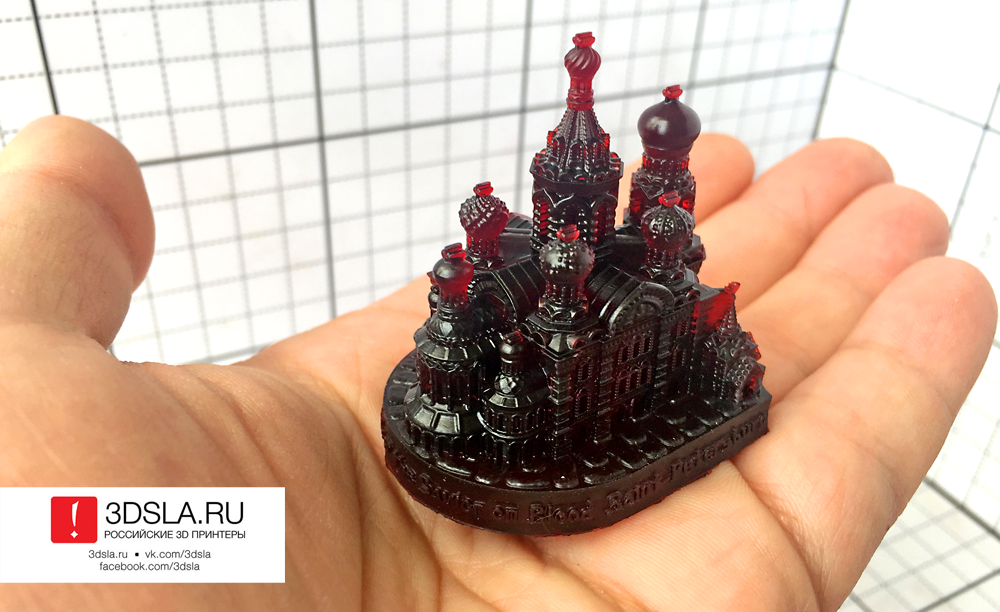
For those looking for 3rd party resins compatible with Formlabs printers, here's a great place to start.
Formlabs has established itself as a leader in stereolithography with the Form 3 printer. It has received rave reviews and is widely used in dentistry. Formlabs also sells a 3D printer for SLS, the Fuse 1.
Buyer's Guide - What to Consider When Buying a Resin 3D Printer
RGB vs. LCD Screens - Differences, Advantages/Disadvantages
earlier models.
This change is only to the benefit of manufacturers, since monochrome screens have many advantages over RGB. Although they are more expensive, they are more efficient, less energy intensive, and print faster due to shorter polymerization times. nine0003
Unless you choose an old used model, you will most likely buy a printer with a default monochrome LCD screen.
LCD Resolution - 2K, 4K, 6K
Like computer monitors and TVs, LCD resolution determines the level of pixels and detail.
Higher resolution translates into better XY resolution and lower layer height, which is a critical factor for the fine detail and precision we expect from resin printers. nine0003
You'll find 2K, 4K and even 8K resolution printers for those who want the ultimate level of detail and intricate detail in their prints.
However, the print quality of the 2K LCD is far superior to that of FDM printers, so it is more than adequate for most applications.
Build Volume
Photopolymer printers typically have a smaller build volume than more common FDM machines, so manufacturers and professionals use them to create small, intricate parts with high precision. nine0003
If you need extra space to print duplicate parts or large figures and models, look to larger format resin printers such as the Peopoly Phenom and Phrozen Sonic Mighty 4K.
Post-Processing Equipment
Resin 3D printing is a messy business and post-processing is a major part of the printing process.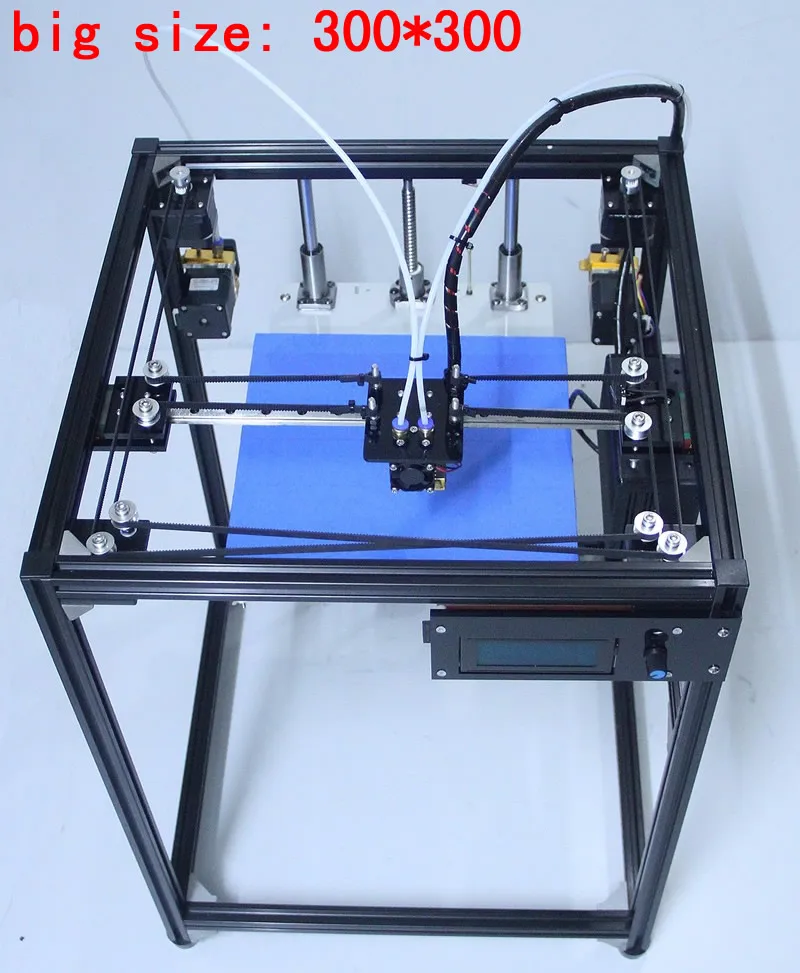 Post-processing consists of two parts - washing and polymerization.
Post-processing consists of two parts - washing and polymerization.
Flushing involves removing uncured resin residue from the print with isopropanol. nine0003
Polymerization uses additional UV light to complete the polymerization process to improve the finish and overall rigidity of the part.
Do-it-yourself, hands-on processing is one option, but manufacturers now offer versatile wash and curing stations that eliminate many of the hassles associated with this process.
How does a photopolymer 3D printer work?
Each type of resin 3D printing technology cures UV resin, they just differ in how they do it. nine0003
Stereolithography (SLA) was the first additive manufacturing technology invented, with patents granted to 3D Systems back in 1986. SLA printing works by using an ultraviolet laser and mirrors (called galvanometers) to selectively cure the resin.
DLP 3D printing was pioneered by EnvisionTEC and uses a projector similar to a movie theater projector.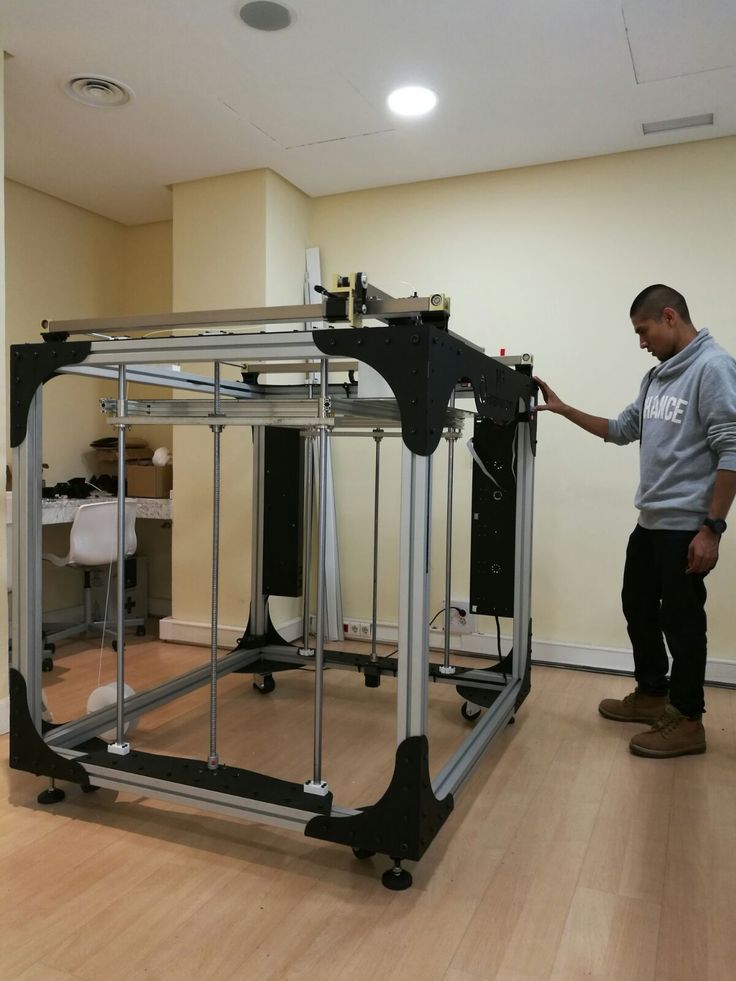 LCD printing uses an LCD screen with individual LEDs that turn on and off to selectively cure specific areas of the resin to form the final object. LCDs are sometimes referred to as MSLA (masked SLA), as in Prusa and Peopoly resin printers. nine0003
LCD printing uses an LCD screen with individual LEDs that turn on and off to selectively cure specific areas of the resin to form the final object. LCDs are sometimes referred to as MSLA (masked SLA), as in Prusa and Peopoly resin printers. nine0003
Resin 3D Printing Technologies
SLA
Using mirrors, also called galvanometers, an SLA or stereolithography printer directs a UV laser beam at photopolymer liquid resin in cross sections to cure or print layer by layer.
DLP
DLP, or Digital Light Processing, is very similar to the SLA machine and involves emitting digital light (LED in most printers) through an array of micromirrors onto a light-sensitive liquid resin for flash, or in other words, curing the entire image layer at a time in so-called voxels - rectangles that look like pixels. nine0003
MSLA/LCD
Like DLP machines, MSLA or stereolithography (often referred to as LCD) printers use a digital light source (usually hundreds of LEDs) to flash an entire layer at once. Unlike DLP, the MSLA printer uses the LCD as a "mask", directing and illuminating a photosensitive liquid resin rather than mirrors. The mask allows the printer to expose only those areas that need to be cured to the light source.
Unlike DLP, the MSLA printer uses the LCD as a "mask", directing and illuminating a photosensitive liquid resin rather than mirrors. The mask allows the printer to expose only those areas that need to be cured to the light source.
LFS
LFS or Low Force Stereolithography is Formlabs patented pot polymerization technology. LFS overhauls the standard SLA process using a custom-designed Closed Light Processing Unit (LPU) that passes a UV laser beam through a spatial filter and an array of mirrors to polymerize the photosensitive liquid resin cross-section layer by layer.
DLS
Another patented technology from Carbon 3D, DLS, or Digital Light Synthesis, uses an oxygen permeable window to cure a photosensitive liquid resin in what is known as continuous liquid interface manufacturing (CLIP). Light from a special LED engine illuminates ultraviolet rays to match the shape and details of the part's cross-section onto an ultra-thin resin layer supported by an oxygen window known as the "dead zone". The resin in the "dead zone" is then cured to create precise, detail-rich layers. nine0003
The resin in the "dead zone" is then cured to create precise, detail-rich layers. nine0003
How much does a photopolymer 3D printer cost?
Good cheap photopolymer 3D printers start at around $200. Even ten years ago, resin printers cost thousands of dollars, but with great advancement - mainly in the field of LCD printing - the prices have come down!
However, these budget photoresin 3D printers can't compete with more professional high resolution printers like the Form 3 ($3,499) or the Peopoly Phenom (1 9$99). They can still produce accurate models, for example for miniatures and other fun projects, but as a photopolymer 3D printer for business, they may not be effective.
Photopolymer 3D printer applications
Budget photopolymer 3D printers are commonly used by hobbyists to produce precise figurines and miniatures in detail that FDM printers simply cannot match. They are commonly used for 28mm miniatures, D&D figurines and other similar desktop model projects.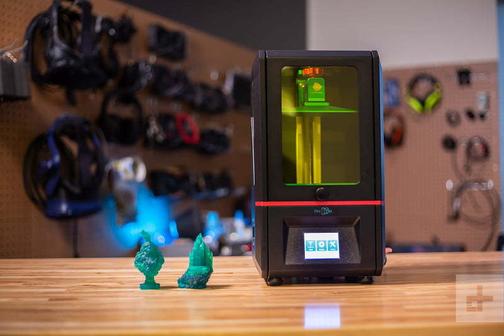 nine0003
nine0003
However, these inexpensive options can sometimes be used to create wax molds for casting jewelry. However, for higher quality precious metal casting, it is recommended to use a more professional resin 3D printer capable of better resolution and accuracy.
photopolymer printers are widely used in dentistry, audiology, jewelry and medical industries. For example, in dentistry, photopolymer 3D printers can print orthodontic models and implants, and in audiology, almost 100% of custom-made hearing aids are now 3D printed. nine0003
3D resin versus filament (FDM)
Hobbyists usually turn to resin 3D printing when they want higher precision, smoother surfaces and sharper details on small prints such as figurines or miniatures. While FDM is simpler, it cannot achieve these levels of precision and smoothness.
However, the trade-off between FDM and resin is that in terms of filament to resin ratio, filaments are cheaper, easier to use and reuse, come in more materials, colors and types, and tend to be stiffer. nine0003
nine0003
Resins tend to be more expensive (although LCD resins are much cheaper now) and harder to use. They require thorough rinsing and post-processing, and extra care must be taken when printing and during post-processing with a resin 3D printer, including wearing protective gear, as the materials can be corrosive.
Thus, resin and thread are used for different purposes, and are not in direct competition for the same use. For the unrivaled precision of cheap 3D printers, as well as the rapid production of dental, jewelry and medical models, resin 3D printers are the way to go. But for more complex - perhaps with multiple colors - basic prototypes, deposition modeling is best suited. nine0003
Anti-selective laser sintering (SLS) resin 3D printing
The trade-off between SLA and selective laser sintering is similar: SLS-printed parts are more rigid, with excellent mechanical properties (and make excellent functional prototypes), although parts printed SLA are characterized by a smoother surface and faster printing.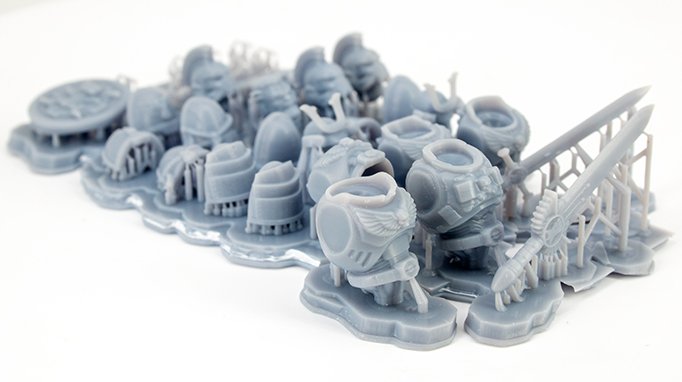
SLS is also great if you're not a fan of additional support structures and don't like post-processing, because the parts printed in the resin powder chamber don't move or deform during printing. SLS offers better material properties than SLA - for example, it is not as susceptible to UV or sun damage. But they are less affordable—even the cheapest printers start at $5,000. nine0003
FAQ
Is resin more durable than PLA?
In general, conventional resin produces brittle, brittle parts that are less resistant to stress and weather than traditional 3D printing materials such as PLA. Therefore, we cannot recommend the resin for making load-bearing, functional, impact-resistant or exterior parts where PLA and ABS work much better, so manufacturers prefer the resin for fragile decorative parts filled with precise detail and a smooth finish. nine0003
Increasingly, however, 3D printing media manufacturers are offering "tough" resins such as Formlabs Tough 2000 Resin, which offer superior tear strength and even outperform ABS in some cases. Real world applications in orthopedics (such as splints and braces) and dentistry (aligners and crowns) demonstrate how people are increasingly turning to tough resins to make strong, wear-resistant parts.
Real world applications in orthopedics (such as splints and braces) and dentistry (aligners and crowns) demonstrate how people are increasingly turning to tough resins to make strong, wear-resistant parts.
Is 3D printer resin expensive?
When viewed in the context of 3D printing and compared to other popular materials and filament types, resin is not particularly expensive. A 1 liter bottle of standard resin costs between $20 and $50 depending on the brand, which is more or less the price of ABS and PLA raw materials.
The number and size of prints you can make from a standard 1 liter bottle can vary, with costs skyrocketing for the most prolific producers.
Is the resin print dirty? nine0003
While the resin printing process itself isn't messy, post-processing of the finished print is invariably an annoying, sloppy mess, not to mention a potentially dangerous mess of dripping resin and harsh isopropanol.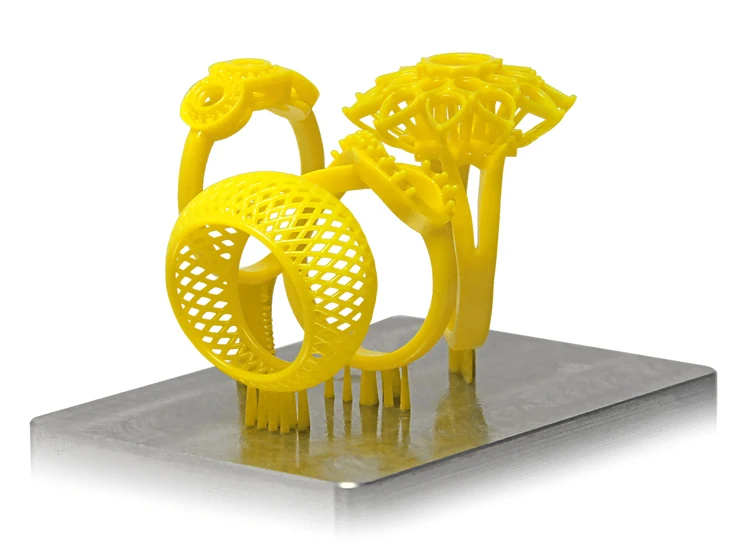 This is not for the faint of heart and not for those who are afraid to get involved in this matter.
This is not for the faint of heart and not for those who are afraid to get involved in this matter.
Luckily, curing and cleaning stations help keep resin processing messy, so you don't get your hands dirty by smearing prints in a vat of isopropanol. nine0003
Do resin prints need to be rinsed and cured?
Yes. The resin printing process leaves uncured resin residue on the finished part. Washing off excess resin ensures that all the details and finish of the print remain accurate when you move on to the polymerization process. It's also a safety issue: washing the resin prints removes potentially toxic, uncured liquid resin, allowing the part to be handled safely.
Curing is an equally important part of the process. When the printer has finished printing the part, the resin is in a transitional state: it is hard enough to retain the desired shape and detail, but lacks overall rigidity, making it prone to scratches, scarring, and imperfections.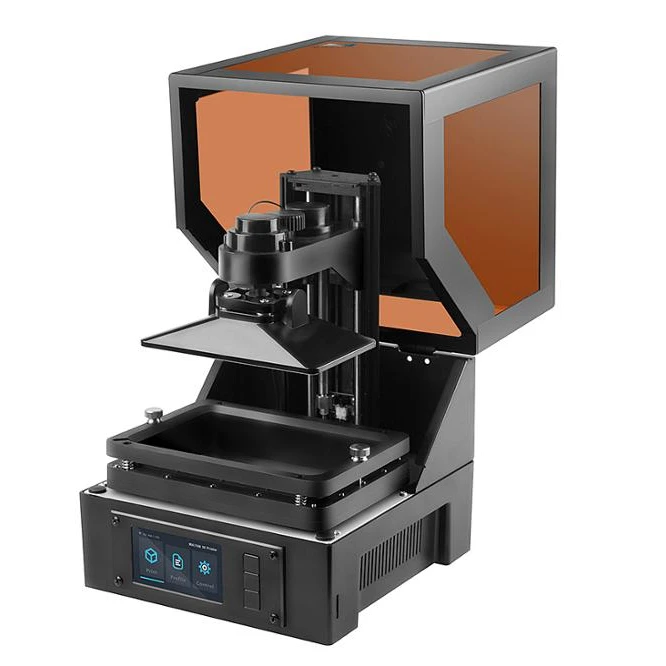 Curing the print with UV, or even sunlight if you have time, allows you to reach the optimal, finished resin state. nine0003
Curing the print with UV, or even sunlight if you have time, allows you to reach the optimal, finished resin state. nine0003
Top 5 Resin 3D Printers (2021 Review)
Resin 3D printer produces highly reliable prints using SLA, LCD or DLP technology. It cures UV resin and turns liquid into high quality 3D models at a faster rate.
To go into more detail, stereolithography (SLA) is the earliest form of resin 3D printing, which works by adding a light sensitive liquid resin substrate to a UV laser beam. The resin is then cured to the desired pattern and the product is formed layer by layer to completion. nine0003
On the other hand, when we talk about digital light processing (DLP), we mean the process of projecting one image in each layer with a digital projector by emitting UV radiation. And with the advent of LCD technology, resin 3D printing with LCD screen is becoming predominant in the 3D printing industry today. Since the LCD screen acts as a mask over the UV light source, it is sometimes referred to as MSLA (masked stereolithography).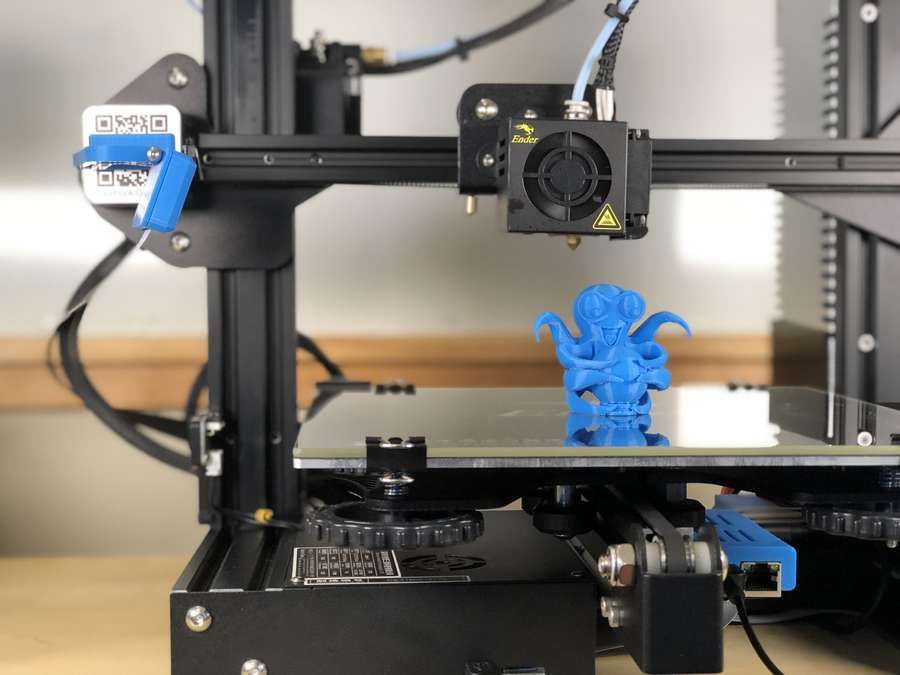
Having said that, getting the right resin 3D printer has never been easier with so many brands and models available on the market. So, to help you on your buying journey, we've provided the top five resin 3D printers, along with advice from our technical experts and 3D printer enthusiasts, to give you the most important information before you buy. nine0003
For 98%
Quality and accuracy
for 97%
Functions
for 9000%
Ease in use
The cost and quality ratio 9000,0002 9041 Pros :
Cons:
Final take:
This ANYCUBIC Photon Mono X resin 3D printer revolutionized resin 3D printing. It impressed us during the testing process as it printed consistently at 3 x 192 x 120 mm. It has a monochrome LCD in the center as well as a 245K resolution panel with 4 micron pixel size (XY). We printed with a thickness of 50mm and were impressed by the quality of the print, which perfectly brings out important and small details. The slicer program is simple but accurate.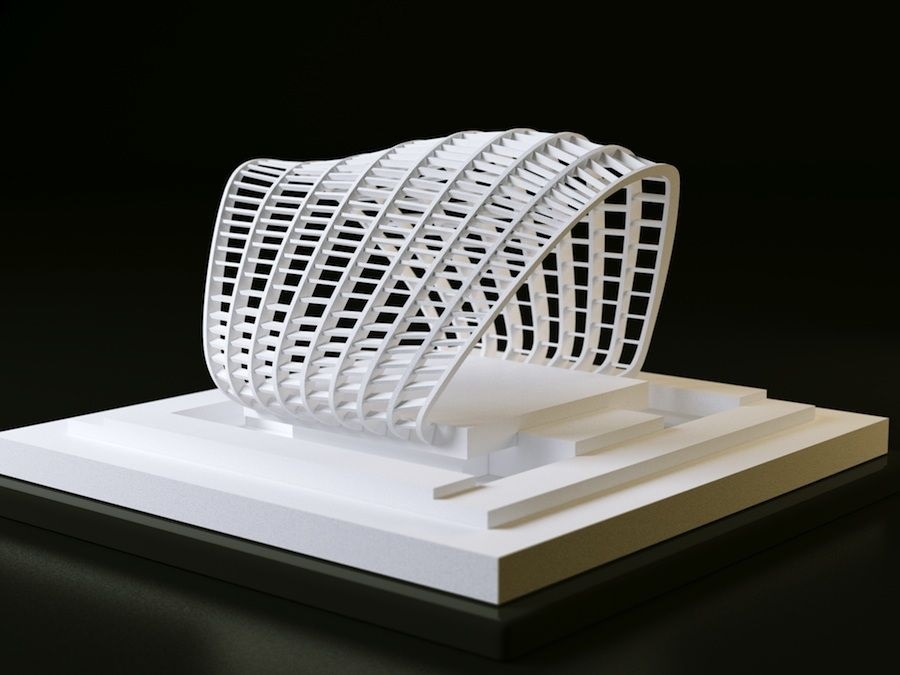 So far, the auto support feature has been reliable because we haven't had missed or failed prints due to insufficient support. The Z-axis is indeed a thread-height bar, while the plastic tank is anodized aluminum, so we've never experienced any Z-axis wobble before this entry. It also features a brushed aluminum platform which improves the adhesion between the platform and prints, as well as its design and durability. Ultimately, this ANYCUBIC Photon Mono X 05D Resin Printer is an excellent entry-level resin UV printer with exceptional print efficiency. We were blown away by its printing capabilities and we can't say enough about the print quality! nine0708
So far, the auto support feature has been reliable because we haven't had missed or failed prints due to insufficient support. The Z-axis is indeed a thread-height bar, while the plastic tank is anodized aluminum, so we've never experienced any Z-axis wobble before this entry. It also features a brushed aluminum platform which improves the adhesion between the platform and prints, as well as its design and durability. Ultimately, this ANYCUBIC Photon Mono X 05D Resin Printer is an excellent entry-level resin UV printer with exceptional print efficiency. We were blown away by its printing capabilities and we can't say enough about the print quality! nine0708
30-50 mm per hour
SLISER software
Chitaboks
quality and accurate
quality and accuracy %
easy to use
for 97%
value for money
Pros of :
Cons:
Final take:
The ELEGOO Mars 3 Mono MSLA 2D printer is among the most affordable 3D printers we have seen so far. It features a monochrome LCD, COB UV light source and a 6.08-inch 2K HD LCD. We printed everything from industrial parts to board game mini-games with a build volume of 129mm x 80mm x 150mm. Compared to RGB LCD 3D printers, it has four times the shelf life and twice the print speed, making it one of the most powerful, reliable and maintenance free resin 3D printers. In the process of testing the transparent resin, we set at least 8 seconds per layer at a height of 0.05 mm, and it showed outstanding consistency. Also, at 11-12 seconds for opaque resins per 0.05mm layer, the prints from this 3D printer are really beautiful and flawless. We had a great time with this ELEGOO Mars 3 Mono MSLA 2D Printer as it is incredibly easy to operate while in use and comes with amazing support. In addition, it creates amazing objects with stunning detail and resolution.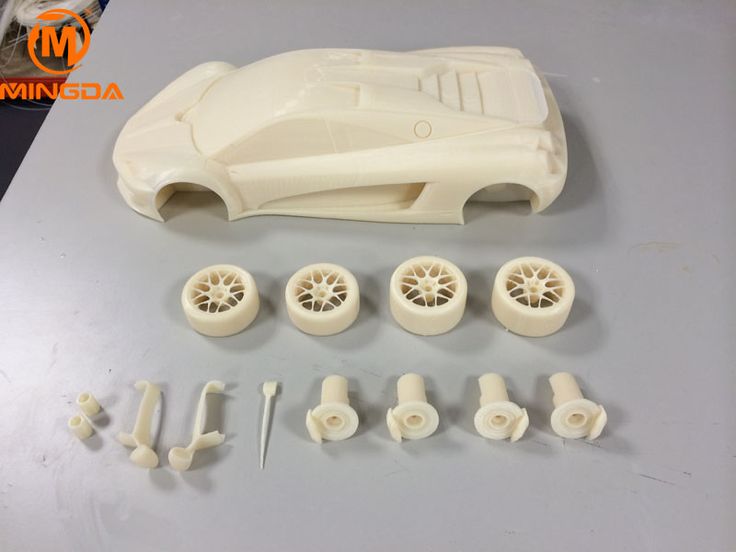 nine0679 30 mm/h
nine0679 30 mm/h
Slicer software
Longer proprietary slicing software. CHITUBOX4
is also supported for 97%
Quality and accuracy
for 96%
Functions 9,0003
for 9000%
Ease in use 9000%
PRICE
nine0542 :
Cons:
Final Take:
This Longer Orange 3 Resin SLA 10D printer is one of the most iconic SLA 3D printers available and is a great entry level LCD light curing device. Assembly takes minimal time as we were able to start printing within minutes of unboxing and the entire process took only 15 minutes. The self-developed slicing program is incredibly easy to use and very fast.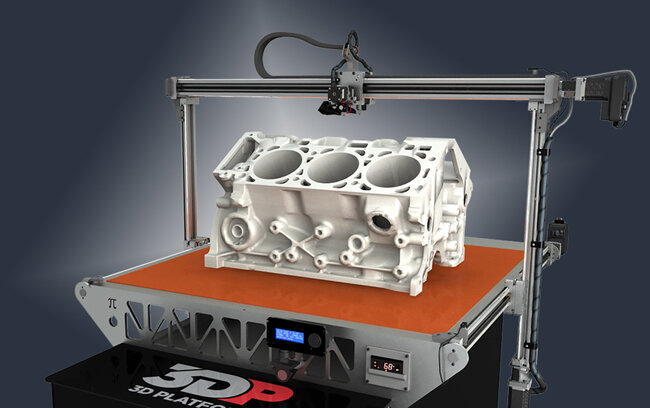 We printed 28mm high mock-ups which took about 3 hours to complete. One thing to note when printing with resin is that the printing process is proportional to the height of the model, meaning that it takes the same amount of time to print six models as it takes to print one model. It produces highly accurate prints and can print complex models such as miniatures including accessories. Ultimately, there is no doubt about its effectiveness, because it produces quality products of an exceptionally high level! This Longer Orange 3 Resin SLA 10D printer is a great buy when it comes to 3D printing. nine0708
We printed 28mm high mock-ups which took about 3 hours to complete. One thing to note when printing with resin is that the printing process is proportional to the height of the model, meaning that it takes the same amount of time to print six models as it takes to print one model. It produces highly accurate prints and can print complex models such as miniatures including accessories. Ultimately, there is no doubt about its effectiveness, because it produces quality products of an exceptionally high level! This Longer Orange 3 Resin SLA 10D printer is a great buy when it comes to 3D printing. nine0708
4C per layer (50-70 mm per hour)
SLISER software
SLISER DLP
Functions
for 93%
Ease in use
for 94%
The price ratio
PLASS :
Cons:
Final take:
Creality 3D printers are gaining popularity and this Creality LD3R Resin 002D printer is another great resin 3D printer in the industry. It is economical yet effective as its powerful UV output delivers 4 seconds per coat with exceptional precision and resolution. During the testing procedure, the initial calibration and setup is extremely easy and our first prints were pretty good. After weeks of continuous testing and use, we can confidently state that this 3D printer is a fantastic piece to get started with resin 3D printing. The resolution is really very good, and the surface quality of the printed parts is impressive. We have been using the printer for two months now, and since we have used it, it has not disappointed us. In addition, the performance of this 3D printer is amazing. Without a doubt, this Creality LD3R Resin 002D Printer is a fantastic way to start your 3D printing journey. nine0010
Cons:
Final take:
This PHROZEN Sonic Mini Resin 3D Printer is an impressive low cost resin 3D printer with high speed printing, high precision and ease of use. It has a very advanced production and processing method that cures the resin in a fraction of a second. In the same way, it uses a thermally stable mono-LCD display, which will better last about 2000 hours, so we don't have to worry about maintenance and care.